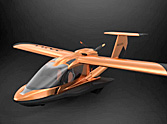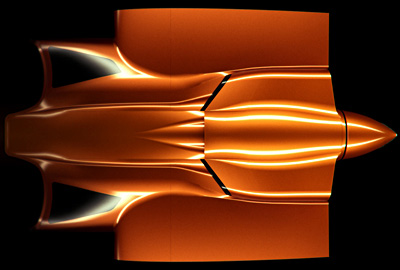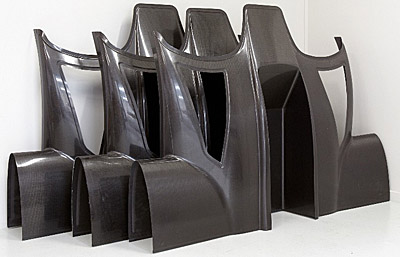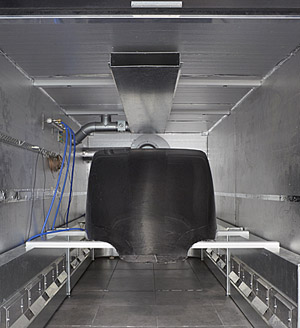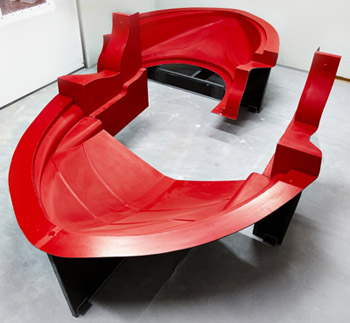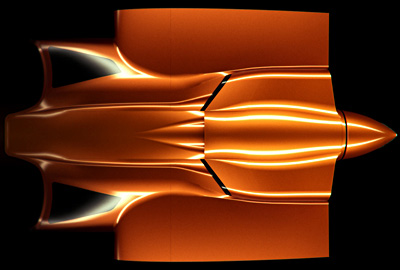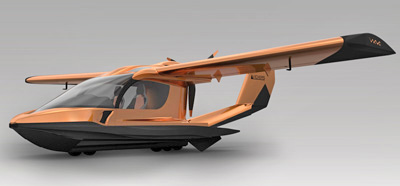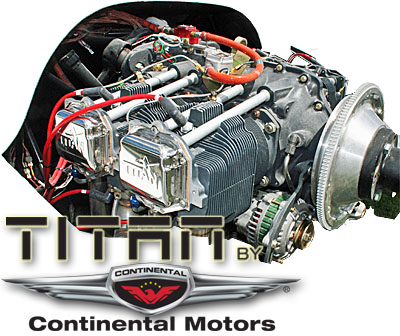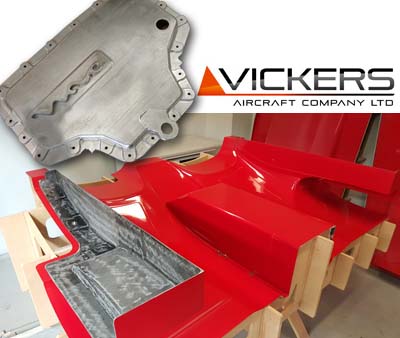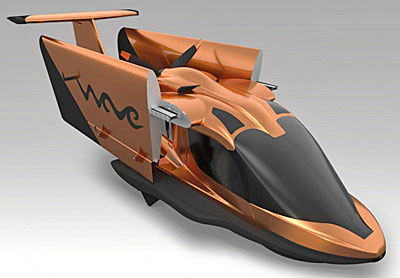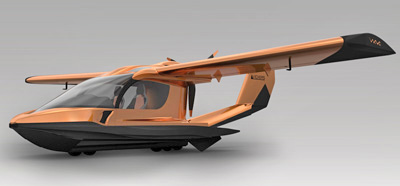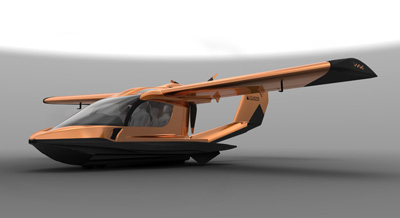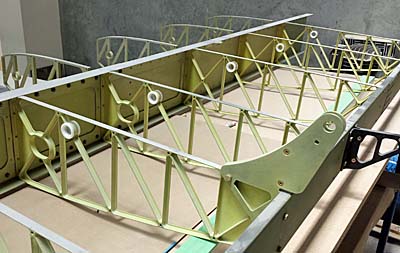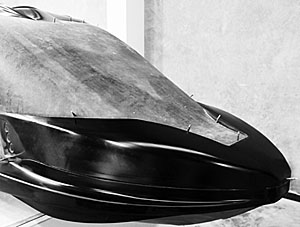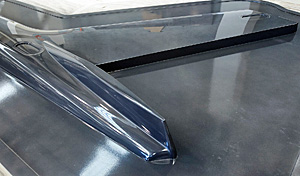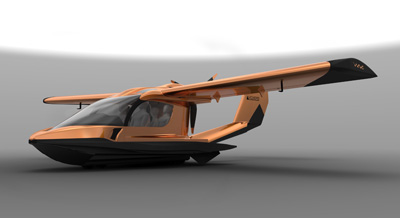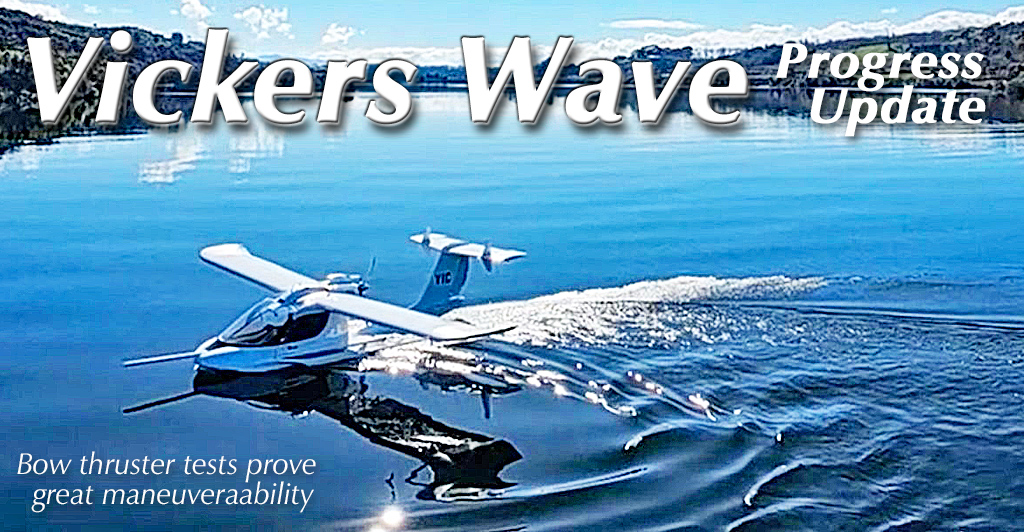
Winter is coming, so naturally, it’s time to start thinking about seaplanes… right? It always seems weird to write about water-based activities as frost begins to envelop the northern two-thirds of the country. Yet winter is when all the big boat shows happen because buying new vessels requires advance planning. It’s also pleasant to think about spring and summer while snow flurries fly. For many years I’ve written about this sector and names like Searey, Seamax, and Aventura (all in nearby image) have long been the leading brands. Now the first two are in financial trouble and the last has decamped to Brazil from Florida. Whatever is going on, Vickers Wave may represent a breath of fresh air. In articles last fall and this spring, I gave overviews of the entire LSA seaplane market (read here or here). Vickers Wave Update Vickers previously noted, “Wave has finished its flight testing, resulting in a 120-knot cruise and useful load of 750 pounds powered by a Rotax 916iS (reviewed here).” “A frequently asked question I receive is, ‘What is taking so long?’,” begins Paul Vickers.


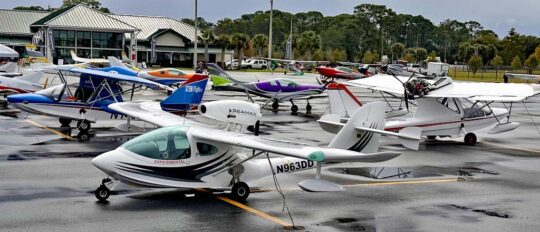 For many years I've written about this sector and names like Searey, Seamax, and Aventura (all in nearby image) have long been the leading brands. Now the first two are in financial trouble and the last has decamped to Brazil from Florida. Whatever is going on, Vickers Wave may represent a breath of fresh air.
In articles last fall and this spring, I gave overviews of the entire LSA seaplane market (
For many years I've written about this sector and names like Searey, Seamax, and Aventura (all in nearby image) have long been the leading brands. Now the first two are in financial trouble and the last has decamped to Brazil from Florida. Whatever is going on, Vickers Wave may represent a breath of fresh air.
In articles last fall and this spring, I gave overviews of the entire LSA seaplane market (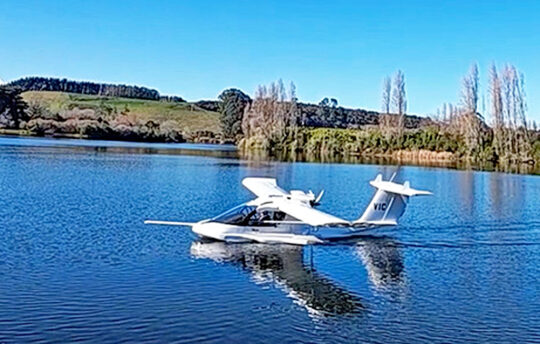 "A frequently asked question I receive is, 'What is taking so long?'," begins Paul Vickers. "Given the scale and complexity of a project like this, it’s worth explaining some of the key challenges we’ve faced and the strategies we’ve employed to address them."
"The process of developing an aircraft like the Wave has spanned nearly 15 years (2009) — approximately one-third of my life," Paul continued. "The path to this stage has been characterized by sustained focus and incremental progress."
"A frequently asked question I receive is, 'What is taking so long?'," begins Paul Vickers. "Given the scale and complexity of a project like this, it’s worth explaining some of the key challenges we’ve faced and the strategies we’ve employed to address them."
"The process of developing an aircraft like the Wave has spanned nearly 15 years (2009) — approximately one-third of my life," Paul continued. "The path to this stage has been characterized by sustained focus and incremental progress."
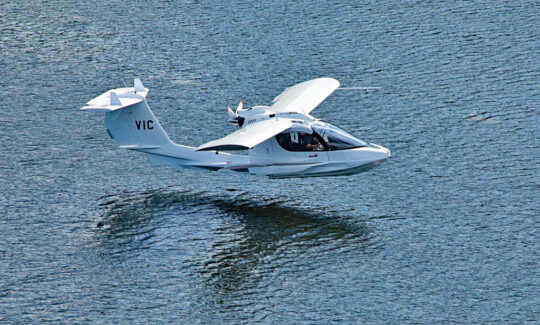 Recalling his early days, Paul wrote, "For the first three to four years, I was the only person dedicated full-time to the Wave, working six to seven days a week." He was focused on ensuring the structural and aerodynamic integrity of the aircraft. Flight testing (
Recalling his early days, Paul wrote, "For the first three to four years, I was the only person dedicated full-time to the Wave, working six to seven days a week." He was focused on ensuring the structural and aerodynamic integrity of the aircraft. Flight testing (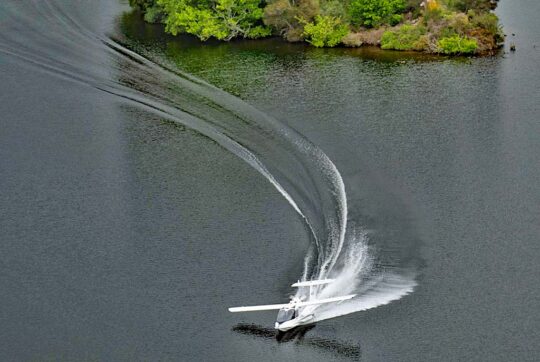 New Zealand’s strict regulatory environment presented an additional set of challenges. The down-under country's Civil Aviation Authority (CAA), similar to the FAA, requires LSA manufacturers to meet General Aviation manufacturing standards. "Consequently," Paul continued, "our company must adhere to rigorous standards and navigate various certification obstacles, including following stringent test pilot requirements."
"Our approach from the beginning has been to construct the prototype with production tooling, molds, and processes," clarified Paul. "This approach aims to reduce variability in future production stages, though it requires significant up-front investment in research and development, creating production-ready tooling, and composite-structure molds. Many manufacturers prioritize design at the expense of manufacturability, but we have chosen to focus on both, with an emphasis on building production efficiencies from the outset."
New Zealand’s strict regulatory environment presented an additional set of challenges. The down-under country's Civil Aviation Authority (CAA), similar to the FAA, requires LSA manufacturers to meet General Aviation manufacturing standards. "Consequently," Paul continued, "our company must adhere to rigorous standards and navigate various certification obstacles, including following stringent test pilot requirements."
"Our approach from the beginning has been to construct the prototype with production tooling, molds, and processes," clarified Paul. "This approach aims to reduce variability in future production stages, though it requires significant up-front investment in research and development, creating production-ready tooling, and composite-structure molds. Many manufacturers prioritize design at the expense of manufacturability, but we have chosen to focus on both, with an emphasis on building production efficiencies from the outset."
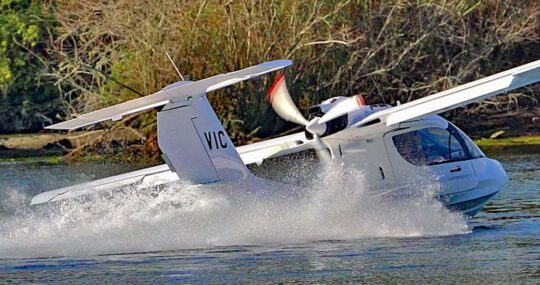 Composite materials, particularly carbon fiber, pose additional complexity due to their variability. Unlike aluminium, for which structural properties and specifications are standardized and readily available, carbon fiber varies depending on the manufacturer. Each type of carbon fabric has unique characteristics based on the material’s weave, the machinery used in its production, and the proprietary resins applied by the supplier. When we receive the carbon fiber, further factors — such as the composition of the mold, oven types and curing cycles, and vacuum application techniques — affect the final product’s structural properties.
Each composite assembly undergoes rigorous testing. "We produce hundreds of test samples (coupons) in various weights and configurations, which are sent to certified labs," began Paul. "These samples are then tested across a range of environmental conditions, including standard daily temperatures, elevated temperatures, hot and wet conditions, and extreme cold. This testing yields 'material allowables' which guide the design and size of components to ensure compliance with our structural requirements. We repeat these tests with various adhesives to validate bonding integrity under similar environmental stresses."
Composite materials, particularly carbon fiber, pose additional complexity due to their variability. Unlike aluminium, for which structural properties and specifications are standardized and readily available, carbon fiber varies depending on the manufacturer. Each type of carbon fabric has unique characteristics based on the material’s weave, the machinery used in its production, and the proprietary resins applied by the supplier. When we receive the carbon fiber, further factors — such as the composition of the mold, oven types and curing cycles, and vacuum application techniques — affect the final product’s structural properties.
Each composite assembly undergoes rigorous testing. "We produce hundreds of test samples (coupons) in various weights and configurations, which are sent to certified labs," began Paul. "These samples are then tested across a range of environmental conditions, including standard daily temperatures, elevated temperatures, hot and wet conditions, and extreme cold. This testing yields 'material allowables' which guide the design and size of components to ensure compliance with our structural requirements. We repeat these tests with various adhesives to validate bonding integrity under similar environmental stresses."
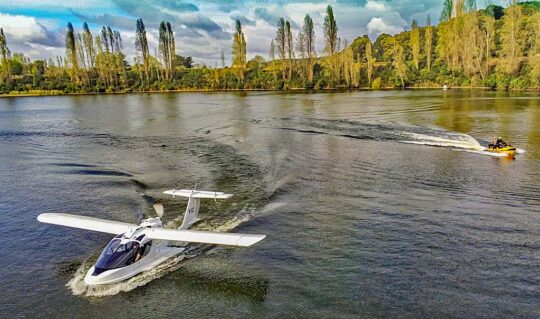 "This technical and regulatory rigor provides a snapshot of what’s involved in bringing a greenfield aircraft design to life," Paul continued. "In addition to fundamental requirements, we have introduced unique features, such as automatic wing-folding, anti-flip landing gear, and water thrusters. Integrating these innovations on an amphibious aircraft, while staying within the weight constraints of the LSA category (
"This technical and regulatory rigor provides a snapshot of what’s involved in bringing a greenfield aircraft design to life," Paul continued. "In addition to fundamental requirements, we have introduced unique features, such as automatic wing-folding, anti-flip landing gear, and water thrusters. Integrating these innovations on an amphibious aircraft, while staying within the weight constraints of the LSA category (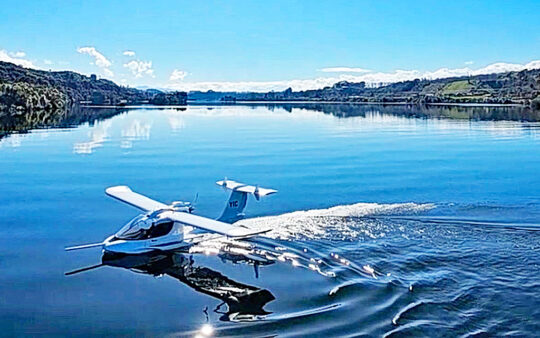
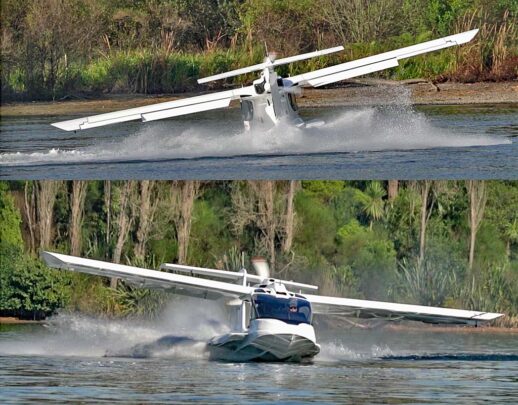
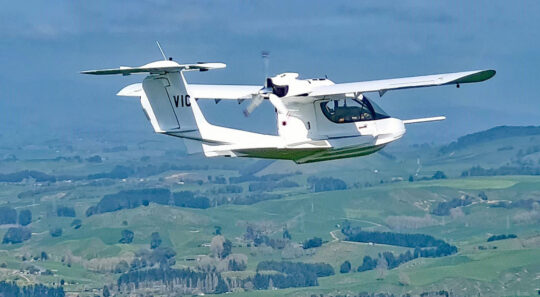 When may first deliveries happen?
When may first deliveries happen?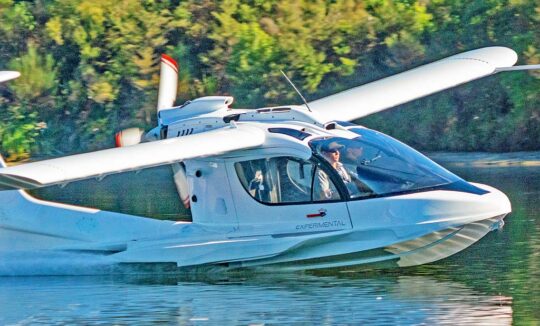 "We have developed new manufacturing techniques that lower cost, increase strength, and save weight, all helping us achieve the incredible useful load."
"We have developed new manufacturing techniques that lower cost, increase strength, and save weight, all helping us achieve the incredible useful load."
 This company video shows testing of the water thrusters on Wave. Note how tightly it can turn on the water.
https://youtu.be/499ftkOlArk?si=JwvEP-fci8K-IsRa
This company video shows testing of the water thrusters on Wave. Note how tightly it can turn on the water.
https://youtu.be/499ftkOlArk?si=JwvEP-fci8K-IsRa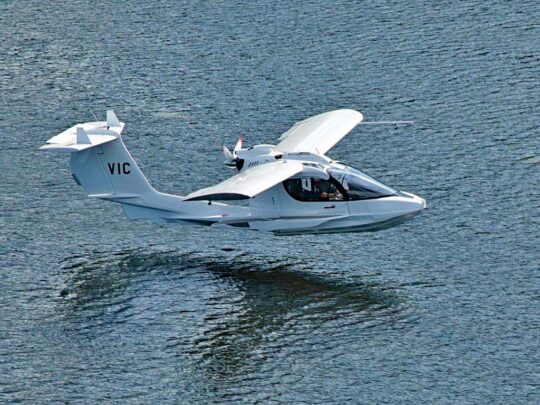 Russ continued, "Founder Paul Vickers said the company is now raising capital to fund the push to begin deliveries on its backlog."
Vickers added, "The plane has finished its flight testing and shook out with a 120-knot cruise and useful load of 750 pounds with a Rotax 916 iS pushing it along."
Paul said the company is planning to manufacture Wave in the U.S. "Most current investors are Americans," Paul noted. A U.S. customer will receive the first Wave.
Russ continued, "Founder Paul Vickers said the company is now raising capital to fund the push to begin deliveries on its backlog."
Vickers added, "The plane has finished its flight testing and shook out with a 120-knot cruise and useful load of 750 pounds with a Rotax 916 iS pushing it along."
Paul said the company is planning to manufacture Wave in the U.S. "Most current investors are Americans," Paul noted. A U.S. customer will receive the first Wave.
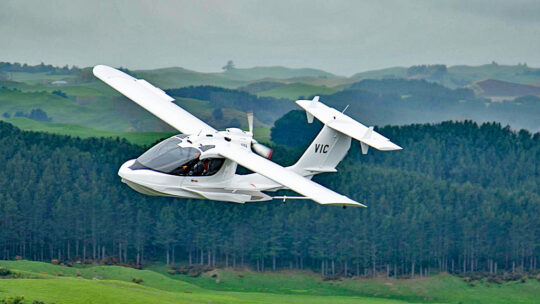 Wave has had a long development cycle but their timing with Mosaic approaching next year looks prescient.
Wave has had a long development cycle but their timing with Mosaic approaching next year looks prescient.
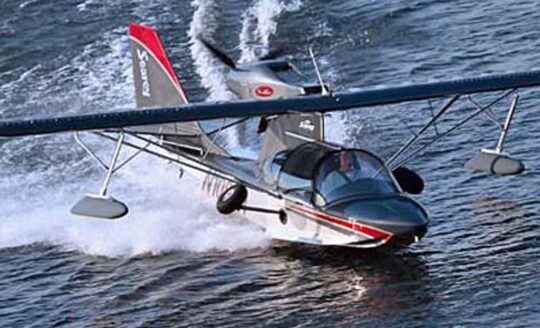 However, Searey won
However, Searey won 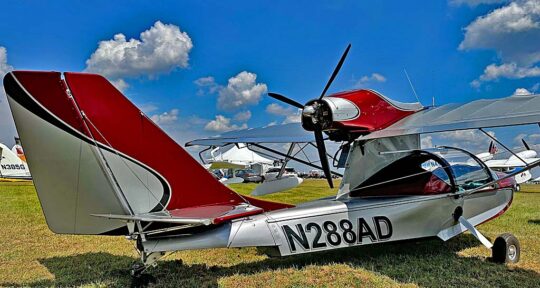 According to a party I know to be reliable, new buyers are ready and have proposed to reacquire the onetime American company. Even original designer Kerry Ritcher is said to be part of the group interested in taking over from the Chinese. While plans remain uncertain, an American group could quickly breathe life back into a moribund brand. In recent years, the company's appearance at airshows was modest and unenthusiastic. Over the last year, no one has answered the phones. Now the factory is shuttered.
Under lock without access, Progressive Aerodyne is reportedly packed into containers in their former factory, while the rent continues unpaid. It looks dire, but a moderately-well-funded investor group could get up and running fairly quickly, it was imagined. The parts business alone has sustained the company and offers a route back to normal operation; reviving that would be a relief to current Searey owners. Action will depend on current ownership making a decision; when that may happen is not known.
Yet combined with the original talent that created this popular LSA seaplane, new investors could quickly brighten those cloudy skies.
According to a party I know to be reliable, new buyers are ready and have proposed to reacquire the onetime American company. Even original designer Kerry Ritcher is said to be part of the group interested in taking over from the Chinese. While plans remain uncertain, an American group could quickly breathe life back into a moribund brand. In recent years, the company's appearance at airshows was modest and unenthusiastic. Over the last year, no one has answered the phones. Now the factory is shuttered.
Under lock without access, Progressive Aerodyne is reportedly packed into containers in their former factory, while the rent continues unpaid. It looks dire, but a moderately-well-funded investor group could get up and running fairly quickly, it was imagined. The parts business alone has sustained the company and offers a route back to normal operation; reviving that would be a relief to current Searey owners. Action will depend on current ownership making a decision; when that may happen is not known.
Yet combined with the original talent that created this popular LSA seaplane, new investors could quickly brighten those cloudy skies.
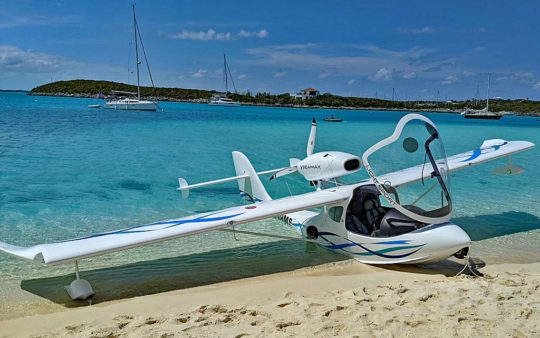 The lightest-of-SLSA-seaplanes
The lightest-of-SLSA-seaplanes 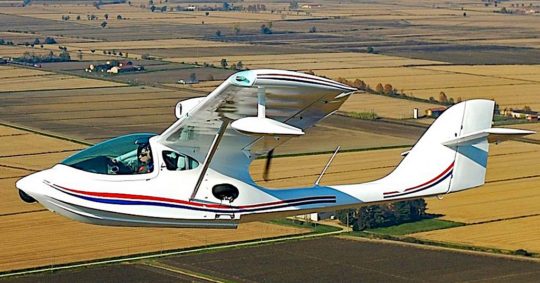 "The company owes several million dollars to creditors and customers," a reliable source told me. "Employees have voiced concerns and some are taking action." Seamax leaders have reportedly managed to keep their core team using "informal payments."
"In North America, the Brazilian company allegedly has more than a dozen orders to fulfill, to customers that have made substantial deposits." The prognosis for those deliveries is unknown, though the company reportedly delivered one aircraft to America recently using unorthodox channels.
"The company owes several million dollars to creditors and customers," a reliable source told me. "Employees have voiced concerns and some are taking action." Seamax leaders have reportedly managed to keep their core team using "informal payments."
"In North America, the Brazilian company allegedly has more than a dozen orders to fulfill, to customers that have made substantial deposits." The prognosis for those deliveries is unknown, though the company reportedly delivered one aircraft to America recently using unorthodox channels.
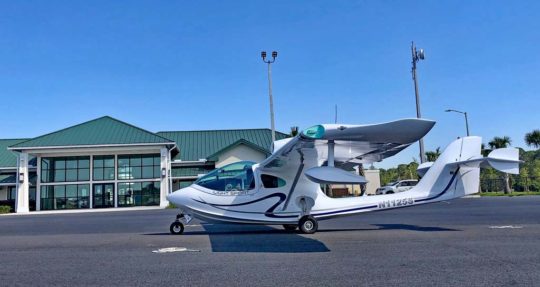 While “buyer beware” is always good advice, one thing I've learned from decades of reporting on this particular sector of aviation: Never write off a worthy design as dead and gone. I've seen many popular aircraft such as Seamax return after internal reforms or under new leadership..
While “buyer beware” is always good advice, one thing I've learned from decades of reporting on this particular sector of aviation: Never write off a worthy design as dead and gone. I've seen many popular aircraft such as Seamax return after internal reforms or under new leadership..
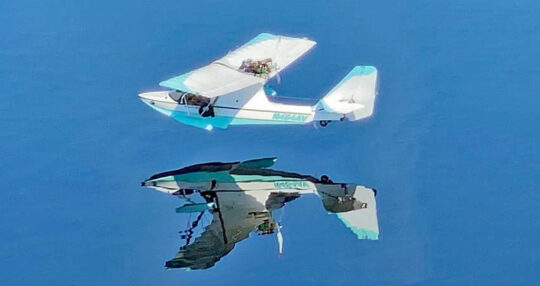 Let's do this up front: the price of a ready-to-ship kit is $59,900. It's available today.
"Due to enhancements in our production capabilities," Aero Adventure stated in a recent mailing, "we produced an additional kit beyond our standard production last month (April, 2024), which is now available for purchase!"
Compare a low price and immediate delivery to any of the aircraft above. It seems like an earlier time when people could actually afford stuff and dealers had products in-stock, ready to deliver. Of course, you'll have to add an engine, avionics, and you might want to doll up the interior but the base price is righteous.
For not much more than $100,000 you could be airborne in a brand-new, well-proven seaplane from a stable manufacturer that is growing their enterprise. Given almost everything you buy has doubled in price during the 2020s, Aventura seems a genuine bargain in 2024.
Let's do this up front: the price of a ready-to-ship kit is $59,900. It's available today.
"Due to enhancements in our production capabilities," Aero Adventure stated in a recent mailing, "we produced an additional kit beyond our standard production last month (April, 2024), which is now available for purchase!"
Compare a low price and immediate delivery to any of the aircraft above. It seems like an earlier time when people could actually afford stuff and dealers had products in-stock, ready to deliver. Of course, you'll have to add an engine, avionics, and you might want to doll up the interior but the base price is righteous.
For not much more than $100,000 you could be airborne in a brand-new, well-proven seaplane from a stable manufacturer that is growing their enterprise. Given almost everything you buy has doubled in price during the 2020s, Aventura seems a genuine bargain in 2024.
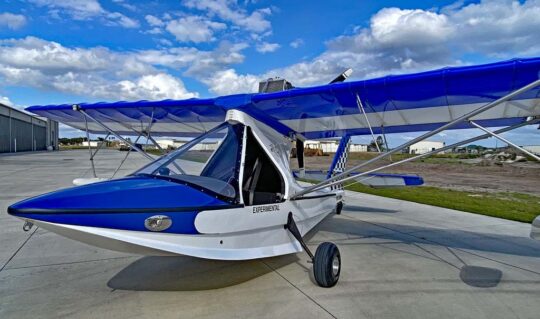 If you believe it's worth a closer look,
If you believe it's worth a closer look, 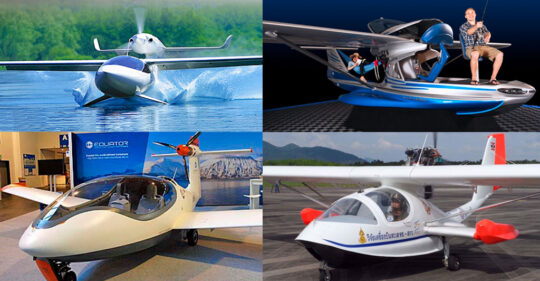 I have often written about many seaworthy aircraft and invite you to
I have often written about many seaworthy aircraft and invite you to 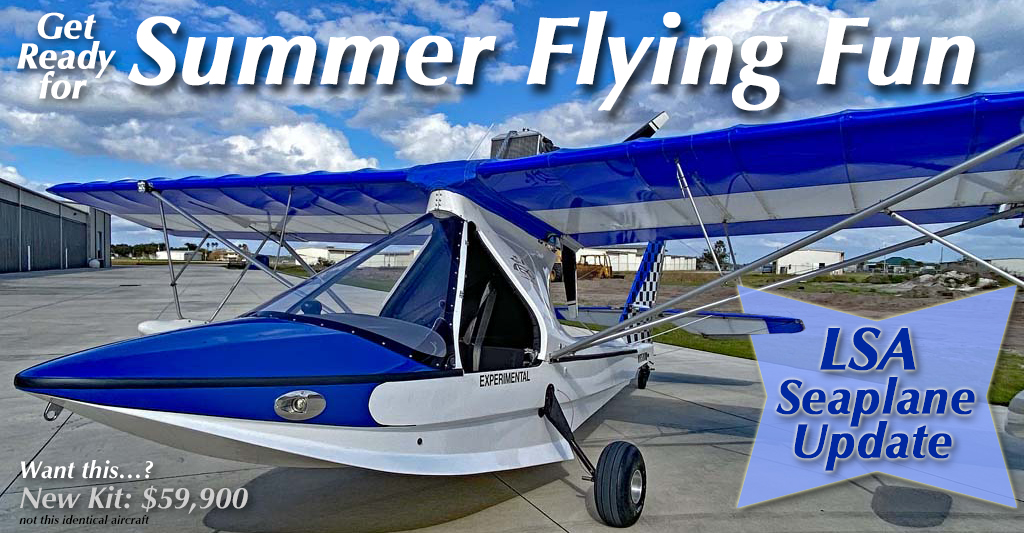
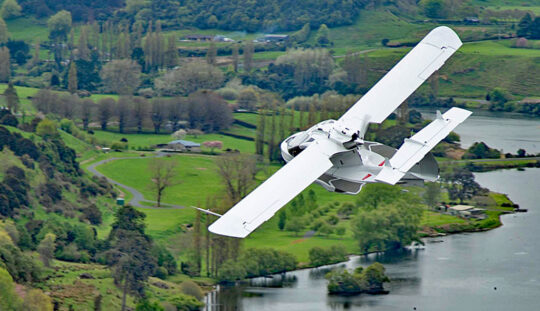 If a 750-pound useful load for a well-equipped LSA seaplane sounds generous, you are looking at this properly. Normally, a LSA seaplane is limited to 1,430 pounds. At that limit, a 750-pound useful load would imply an impossibly-light 680-pound empty weight. It would be very challenging to make an aircraft of this detail come in that light. Is the company deceiving us? No.
After being petitioned according to regulation, FAA granted a weight increase to Vickers allowing an 1,850-pound gross (see
If a 750-pound useful load for a well-equipped LSA seaplane sounds generous, you are looking at this properly. Normally, a LSA seaplane is limited to 1,430 pounds. At that limit, a 750-pound useful load would imply an impossibly-light 680-pound empty weight. It would be very challenging to make an aircraft of this detail come in that light. Is the company deceiving us? No.
After being petitioned according to regulation, FAA granted a weight increase to Vickers allowing an 1,850-pound gross (see 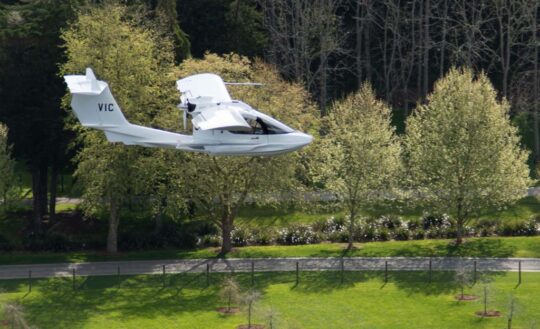 "We are very excited to offer 10 delivery positions for Year Two production," Paul said. Vickers believes this represents a different approach to market adoption for Wave.
Thirteen years into the development of the Wave, the company said, "Our manufacturing facilities are complete, initial deliveries are scheduled, test flights are complete, and production molds are already in use." A lot of time preparing is close to putting aircraft in the sky — and on the water.
"We are very excited to offer 10 delivery positions for Year Two production," Paul said. Vickers believes this represents a different approach to market adoption for Wave.
Thirteen years into the development of the Wave, the company said, "Our manufacturing facilities are complete, initial deliveries are scheduled, test flights are complete, and production molds are already in use." A lot of time preparing is close to putting aircraft in the sky — and on the water.
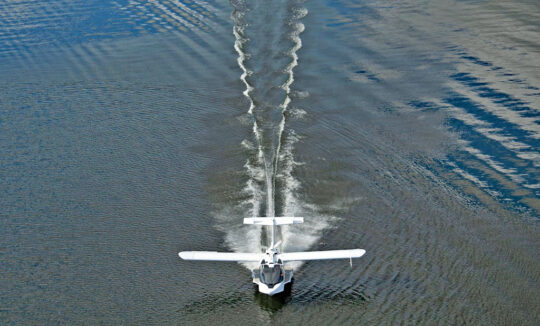 "As if the aircraft itself wasn't enough incentive to join our journey now, we are offering a discount of 50% and 25% for the first two movers, so be quick. Why a discount? We prioritize market traction," explained Vickers.
"As if the aircraft itself wasn't enough incentive to join our journey now, we are offering a discount of 50% and 25% for the first two movers, so be quick. Why a discount? We prioritize market traction," explained Vickers.
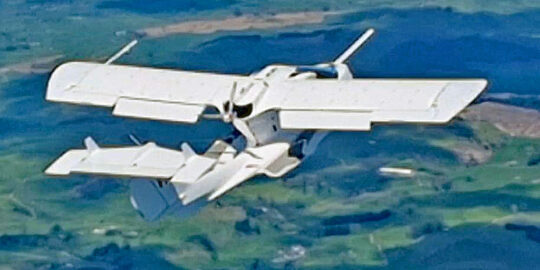
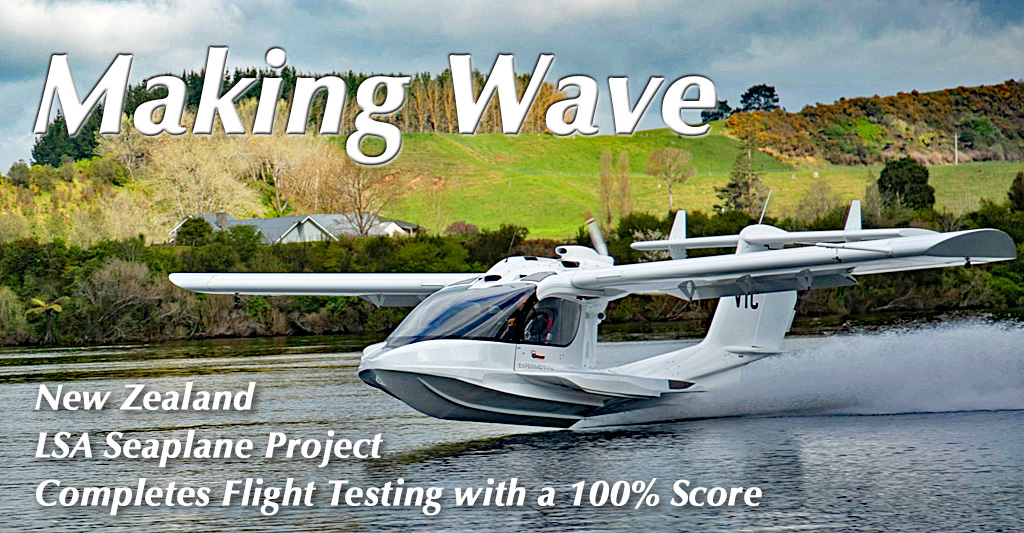
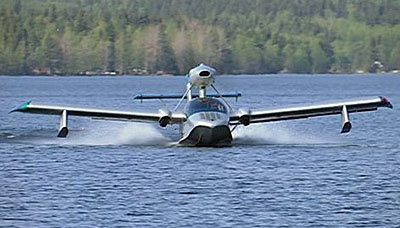
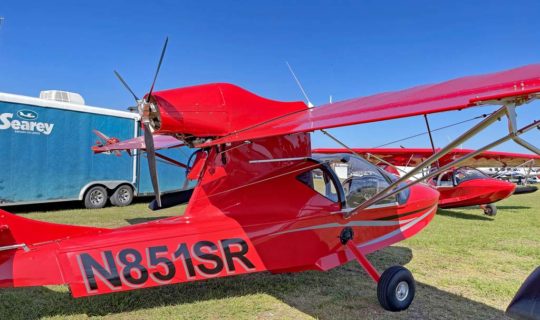
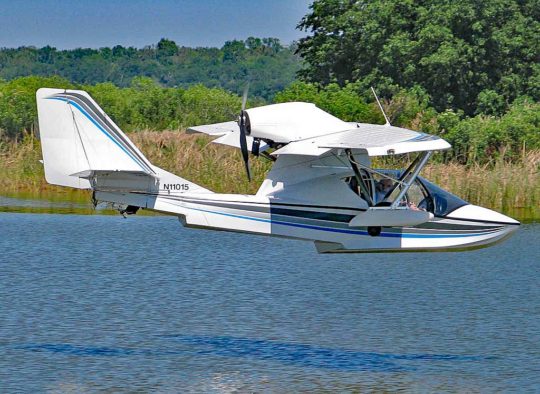 Wayne and Kerry Richter started the company and created several designs including the flagship Searey. The Ritchers operated Progressive Aerodyne for two decades before selling to Adam Yang in 2011. Six years later, Adam sold a majority interest to Chinese investors and new management was installed.
News is sparse, as is common in such situations, but at last report Kerry indicated he was working the problem. Two days ago, Kerry posted on Facebook about his visit to China. One can hope he makes some headway for this popular design that has served more than 600 deeply-loyal customers to date.
Searey is definitely a benchmark design in the space with the longest history and the largest fleet.
Wayne and Kerry Richter started the company and created several designs including the flagship Searey. The Ritchers operated Progressive Aerodyne for two decades before selling to Adam Yang in 2011. Six years later, Adam sold a majority interest to Chinese investors and new management was installed.
News is sparse, as is common in such situations, but at last report Kerry indicated he was working the problem. Two days ago, Kerry posted on Facebook about his visit to China. One can hope he makes some headway for this popular design that has served more than 600 deeply-loyal customers to date.
Searey is definitely a benchmark design in the space with the longest history and the largest fleet.
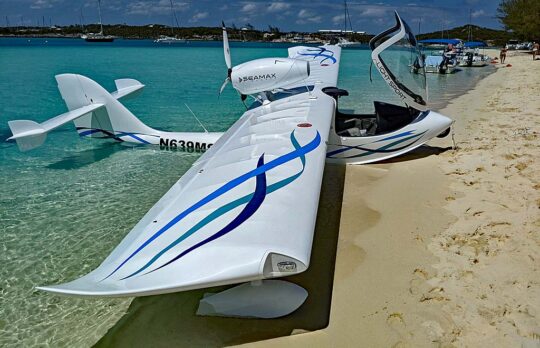 With regret, I was forced to remove advertisements for both companies despite each supporting this website for many years. Not only were bills unpaid but repeated requests for communication, using multiple means of contact, all went unheeded. Until the lack of response is solved interested parties should be cautious and inquire carefully.
I'm an optimist and hope both brands settle their issues and return to market. I've flown Searey and Seamax and loved them both for their best qualities. I hope for better news to report.
With regret, I was forced to remove advertisements for both companies despite each supporting this website for many years. Not only were bills unpaid but repeated requests for communication, using multiple means of contact, all went unheeded. Until the lack of response is solved interested parties should be cautious and inquire carefully.
I'm an optimist and hope both brands settle their issues and return to market. I've flown Searey and Seamax and loved them both for their best qualities. I hope for better news to report.
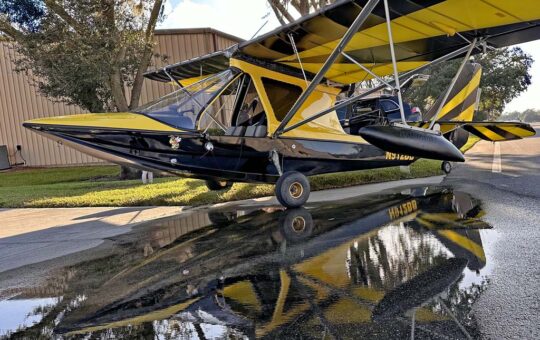
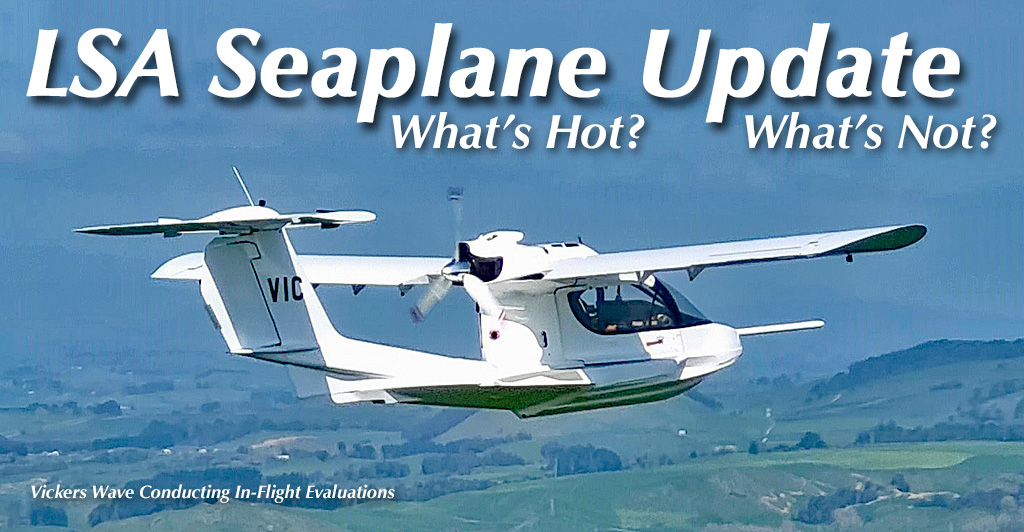
 One LSA seaplane we've been anticipating for a long time is
One LSA seaplane we've been anticipating for a long time is 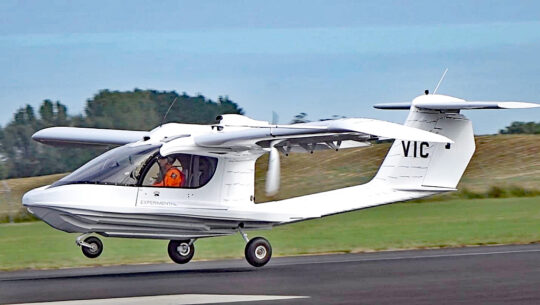 That was unfortunate but unavoidable. The show must go on (and be reported). I'm always amazed at how many aircraft make first flights or other notable events just as some show is opening.
As
That was unfortunate but unavoidable. The show must go on (and be reported). I'm always amazed at how many aircraft make first flights or other notable events just as some show is opening.
As 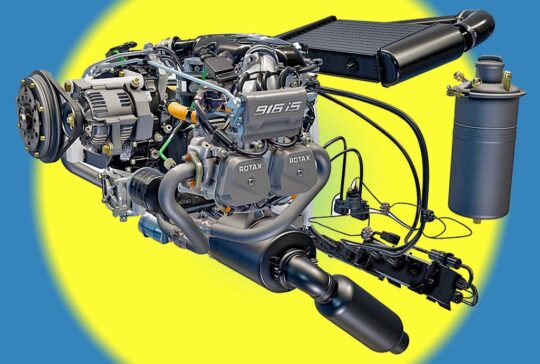 Fitting the new engine, completing all water-based testing, and preparing for ASTM's lengthy flight test requirements will keep Team Vickers close to their shop for the next few months.
"We will not be attending Oshkosh this year (2023) as we have a particular path to market that we will begin to unveil in 2024." Paul explained this comment, "We have watched and learned from other aircraft (and automotive) manufacturers over the past 10 years and clearly see the mistakes, and promises, that were made and missed. We will be applying the same thought process and discipline to our pending rollout as we have done to the entire project to date. There is no point in having an aircraft without a manufacturing company to support it, so we did both in parallel. Likewise, there is no point embarking on expensive marketing and airshow displays until we have a product to deliver and demonstrate."
Fitting the new engine, completing all water-based testing, and preparing for ASTM's lengthy flight test requirements will keep Team Vickers close to their shop for the next few months.
"We will not be attending Oshkosh this year (2023) as we have a particular path to market that we will begin to unveil in 2024." Paul explained this comment, "We have watched and learned from other aircraft (and automotive) manufacturers over the past 10 years and clearly see the mistakes, and promises, that were made and missed. We will be applying the same thought process and discipline to our pending rollout as we have done to the entire project to date. There is no point in having an aircraft without a manufacturing company to support it, so we did both in parallel. Likewise, there is no point embarking on expensive marketing and airshow displays until we have a product to deliver and demonstrate."
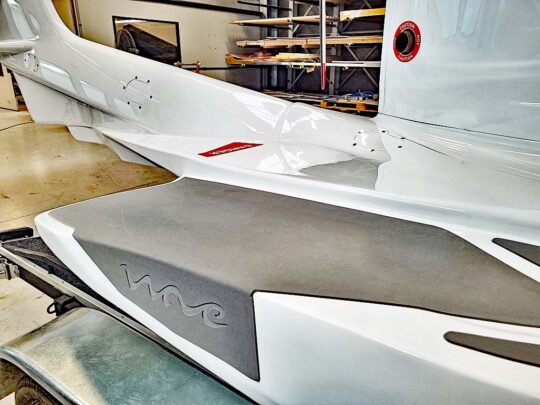 Who would argue these points? Yet it takes patience — and money — to go at a deliberate pace.
To appease those anxious to get in line for a Wave, Paul noted, "We are releasing a few early delivery positions at each milestone so we can confidently begin to scale and ramp year one and two production with confidence, allowing us to secure engines, carbon fiber, and avionics. If you want to get the early list,
Who would argue these points? Yet it takes patience — and money — to go at a deliberate pace.
To appease those anxious to get in line for a Wave, Paul noted, "We are releasing a few early delivery positions at each milestone so we can confidently begin to scale and ramp year one and two production with confidence, allowing us to secure engines, carbon fiber, and avionics. If you want to get the early list, 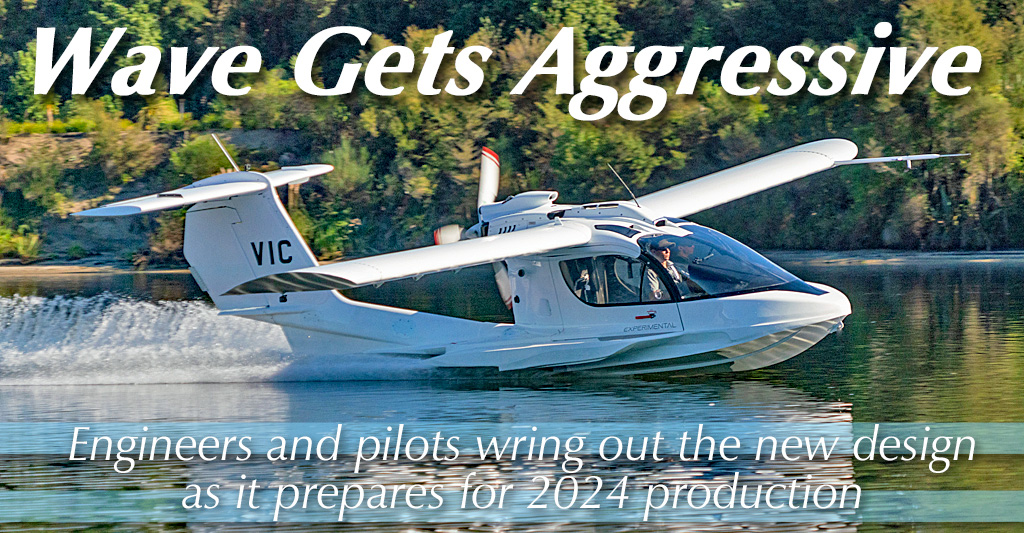
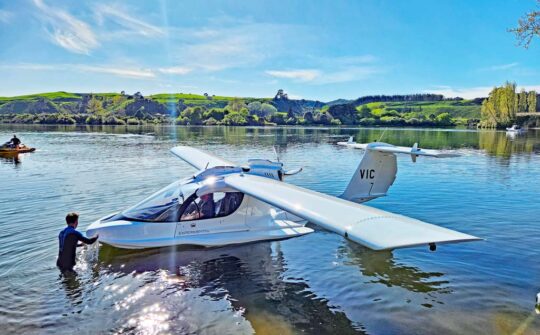 Remember, seasons are reversed in the Southern Hemisphere. New Zealand is now emerging from winter (during our summer) and is beginning its warmer climate. The summer months in New Zealand are December, January, and February so the weather is getting nice down under.
Remember, seasons are reversed in the Southern Hemisphere. New Zealand is now emerging from winter (during our summer) and is beginning its warmer climate. The summer months in New Zealand are December, January, and February so the weather is getting nice down under.
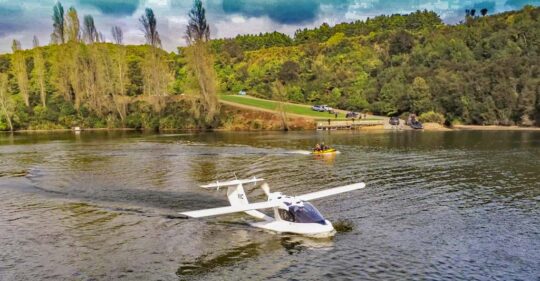 One of the explanations for the longer development cycle was that
One of the explanations for the longer development cycle was that 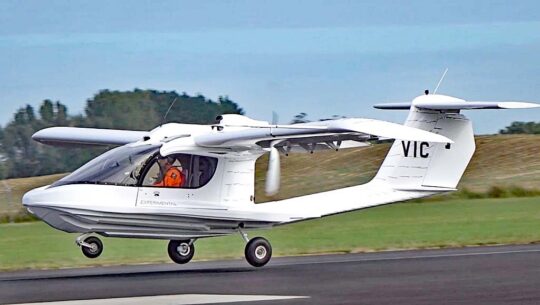 Water launch to flight is still pending but the down-under LSA seaplane was satisfied with the initial float evaluation.
"We spent the best part of two weeks water testing in the beautiful Waikato, here in New Zealand," noted main developer and company namesake, Paul Vickers.
Water launch to flight is still pending but the down-under LSA seaplane was satisfied with the initial float evaluation.
"We spent the best part of two weeks water testing in the beautiful Waikato, here in New Zealand," noted main developer and company namesake, Paul Vickers.
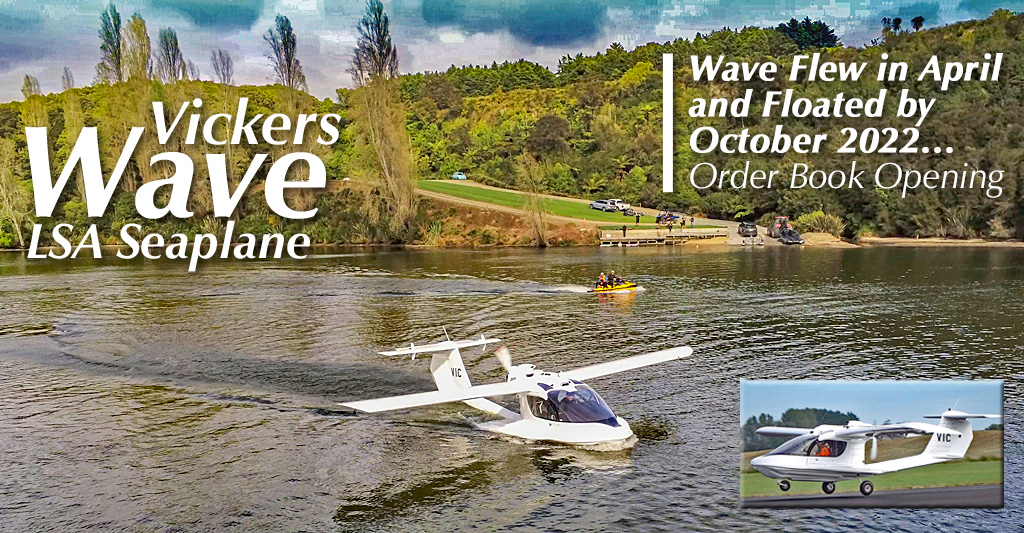
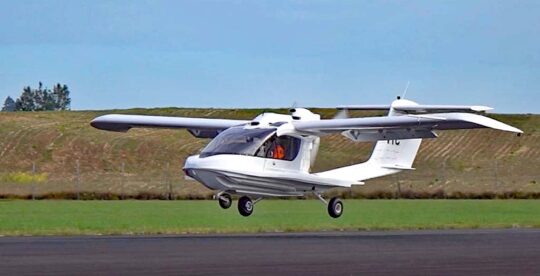 "While much of the aircraft is as it will be in final production, the interior and landing gear are purely functional, allowing us to refine and perfect these areas," explained Paul. As you see in the list below, Wave promises landing gear unlike any other seaplane. "After a series of further test flights, we will be removing the undercarriage and commencing the much-anticipated water testing," said Paul. "Once we have completed the water testing, we will be fitting our revolutionary undercarriage."
As the Vickers team observed and as the video appears to show, Wave flew well as soon as it got airborne for the first time.
"While much of the aircraft is as it will be in final production, the interior and landing gear are purely functional, allowing us to refine and perfect these areas," explained Paul. As you see in the list below, Wave promises landing gear unlike any other seaplane. "After a series of further test flights, we will be removing the undercarriage and commencing the much-anticipated water testing," said Paul. "Once we have completed the water testing, we will be fitting our revolutionary undercarriage."
As the Vickers team observed and as the video appears to show, Wave flew well as soon as it got airborne for the first time.
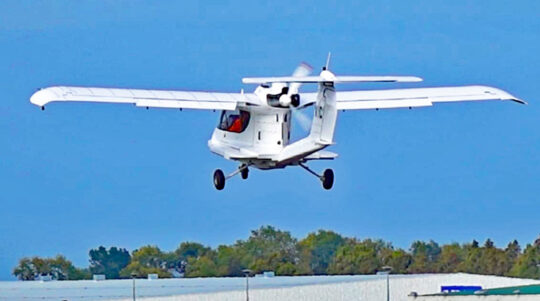 "Seeing how stable Wave was in flight is a true testament to taking the time to get things right," Paul felt. "Always having 'safety' as the key driver for every decision has proven to be an incredibly fundamental corner stone for the Wave project; from who we hire to our suppliers and hardware, safety has led our decisions."
Along the way, Vickers has looked at different engines but the New Zealand group settled on the
"Seeing how stable Wave was in flight is a true testament to taking the time to get things right," Paul felt. "Always having 'safety' as the key driver for every decision has proven to be an incredibly fundamental corner stone for the Wave project; from who we hire to our suppliers and hardware, safety has led our decisions."
Along the way, Vickers has looked at different engines but the New Zealand group settled on the 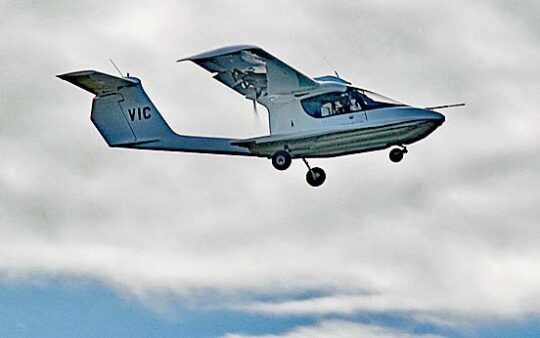 For avionics in the test aircraft as well as in later production aircraft, Vickers had selected Dynon. Other systems will also be offered.
"Dynon stepped up very early in our program and have been an incredible support during the installation and system checks, all of which were seamless," Paul said. "
For avionics in the test aircraft as well as in later production aircraft, Vickers had selected Dynon. Other systems will also be offered.
"Dynon stepped up very early in our program and have been an incredible support during the installation and system checks, all of which were seamless," Paul said. "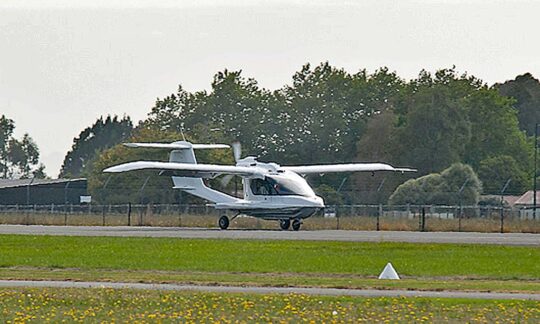 "Of all the light airplanes I have flown, Wave is now and by far my favorite," said Paco. "Paul and his team have done a spectacular job designing and building Wave. It was an honor and privilege to conduct the first flight. I can’t wait to fly Wave again."
"The design team are well on the way to firming up the remaining areas to be productionized," finished Paul, "while the production team is looking at increasing capacity and forward ordering required materials."
Congratulations to the Vickers team for taking the time to get it right and for completing a successful first flight, a momentous achievement for any clean-sheet design such as Wave.
"Of all the light airplanes I have flown, Wave is now and by far my favorite," said Paco. "Paul and his team have done a spectacular job designing and building Wave. It was an honor and privilege to conduct the first flight. I can’t wait to fly Wave again."
"The design team are well on the way to firming up the remaining areas to be productionized," finished Paul, "while the production team is looking at increasing capacity and forward ordering required materials."
Congratulations to the Vickers team for taking the time to get it right and for completing a successful first flight, a momentous achievement for any clean-sheet design such as Wave.
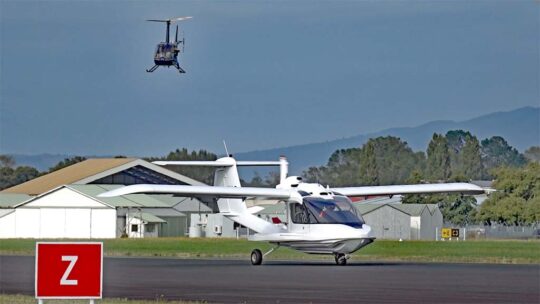 For those curious about weight exemptions for Light-Sport Aircraft — Wave is the fourth such weight exemption granted. Before them came exemptions for 1,680 pounds and 1,800 pounds (the latter for Terrafugia and SkyRunner. At 1,850 pounds, Wave is the new high-water mark but not by much. Under the coming Mosaic rule, these exemptions may no longer be necessary.
Visitors to
For those curious about weight exemptions for Light-Sport Aircraft — Wave is the fourth such weight exemption granted. Before them came exemptions for 1,680 pounds and 1,800 pounds (the latter for Terrafugia and SkyRunner. At 1,850 pounds, Wave is the new high-water mark but not by much. Under the coming Mosaic rule, these exemptions may no longer be necessary.
Visitors to 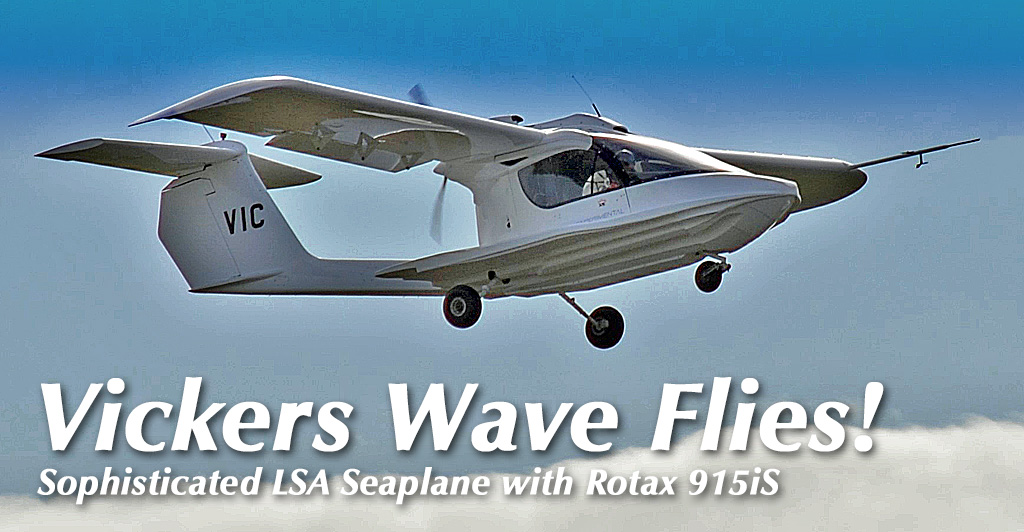
 Now that 2021 is historical and following two years of Covid uncertainty and business interruptions, many readers can breathe a sigh of relief for an better 2022.
We have two full years remaining before FAA's Mosaic regulation becomes active. During that time you'll need to respond to the proposal I predict we will see at Oshkosh 2022 (only seven months away). Until then, what might happen in the world of light aviation?
I don't know any better than you. The future is as unknowable as ever. So many things can happen …who expected Covid-19? With my eye to the sky I'm pleased to start the new year out with some fresh news. Here are five stories to kick off 2022.
Now that 2021 is historical and following two years of Covid uncertainty and business interruptions, many readers can breathe a sigh of relief for an better 2022.
We have two full years remaining before FAA's Mosaic regulation becomes active. During that time you'll need to respond to the proposal I predict we will see at Oshkosh 2022 (only seven months away). Until then, what might happen in the world of light aviation?
I don't know any better than you. The future is as unknowable as ever. So many things can happen …who expected Covid-19? With my eye to the sky I'm pleased to start the new year out with some fresh news. Here are five stories to kick off 2022.
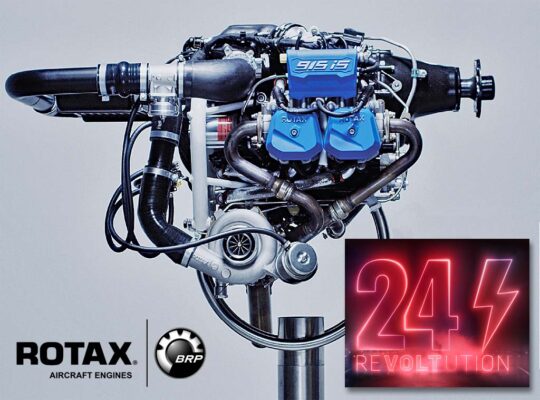 On December 22nd, 2021,
On December 22nd, 2021, 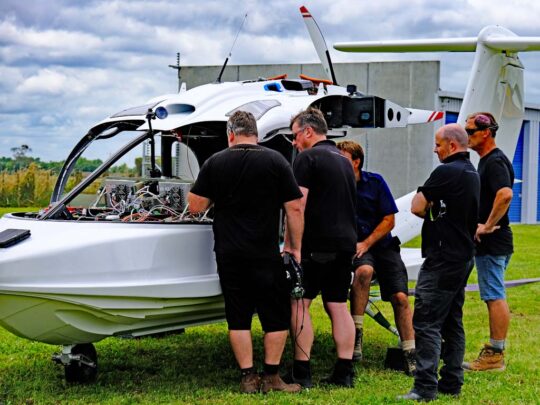 This was even more meaningful as Vickers installed RS Flight Systems’ single-lever control equipment (approval of which is expected in the coming FAA Mosaic regulation) regulating an MT prop.
This was even more meaningful as Vickers installed RS Flight Systems’ single-lever control equipment (approval of which is expected in the coming FAA Mosaic regulation) regulating an MT prop. 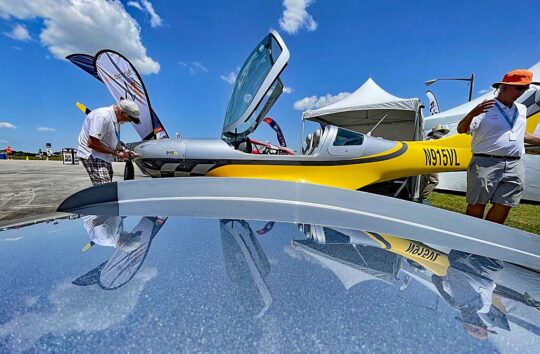 Try as they might to contain increases with various techniques, JMB representatives at
Try as they might to contain increases with various techniques, JMB representatives at 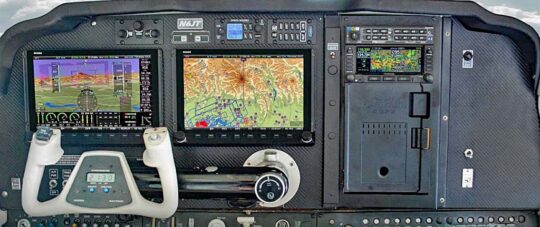 Why care? It's simple. If Dynon finds more market for their products, they'll be stronger to support your Dynon and to keep coming up with great new avionics ideas for all of us.
Almost single-handedly Dynon brought affordable, sophisticated, computer-based instruments to the cockpit. It wasn't that long ago that equipping a Part 23 bird with modern flat-screen equipment was a $100,000+ expense. Dynon brought such prices back to Earth.
Why care? It's simple. If Dynon finds more market for their products, they'll be stronger to support your Dynon and to keep coming up with great new avionics ideas for all of us.
Almost single-handedly Dynon brought affordable, sophisticated, computer-based instruments to the cockpit. It wasn't that long ago that equipping a Part 23 bird with modern flat-screen equipment was a $100,000+ expense. Dynon brought such prices back to Earth.
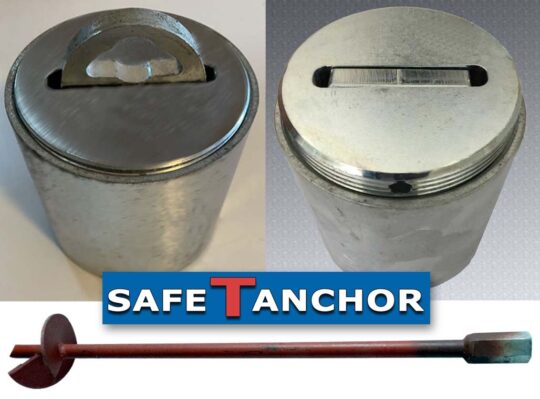 "We have invented and patented a safetanchor for planes and other uses. Easy to install yourselves and patented in the USA," wrote the company.
Design of the anchor’s top allows it to pivot from hook-up to becoming completely flat. This makes the entire surface of anchors flush to ground level without removing them and so you can drive vehicles over it, cut the grass, prevents tripping of personnel, and being a hazard to cleaning machines or snow removal equipment.
"We have invented and patented a safetanchor for planes and other uses. Easy to install yourselves and patented in the USA," wrote the company.
Design of the anchor’s top allows it to pivot from hook-up to becoming completely flat. This makes the entire surface of anchors flush to ground level without removing them and so you can drive vehicles over it, cut the grass, prevents tripping of personnel, and being a hazard to cleaning machines or snow removal equipment.
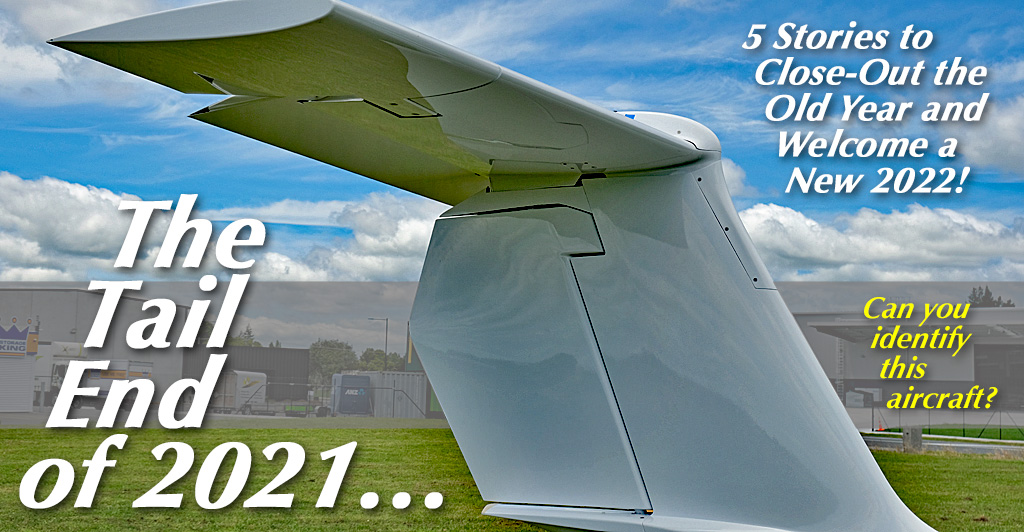
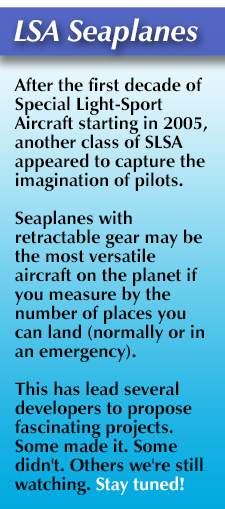
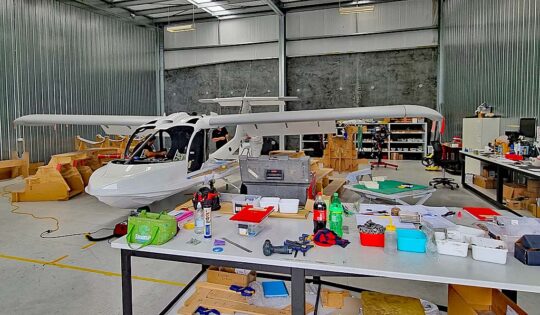
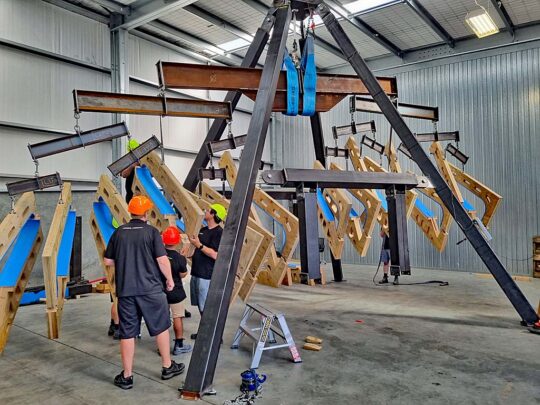
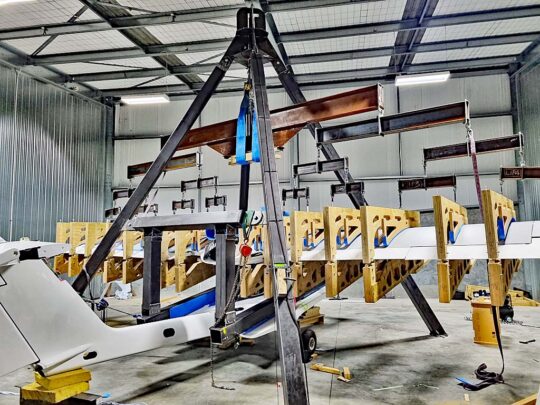 Great existing designs, a high-end model, other fascinating forays that upped the game, and a full market of choices — what does a new high-end entrant have to do? A lot! Breaking into this well-supplied sector of light aviation demands an impressive entry. Vickers appears well poised to bring something truly interesting and one built with the future in mind. It also got the
Great existing designs, a high-end model, other fascinating forays that upped the game, and a full market of choices — what does a new high-end entrant have to do? A lot! Breaking into this well-supplied sector of light aviation demands an impressive entry. Vickers appears well poised to bring something truly interesting and one built with the future in mind. It also got the 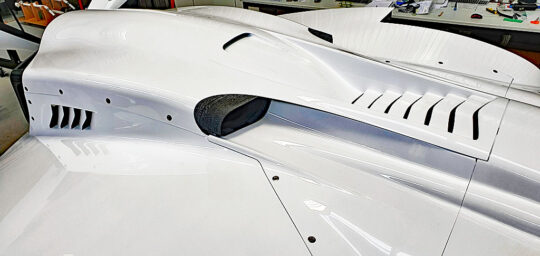
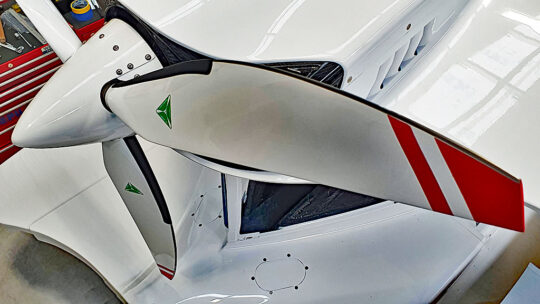
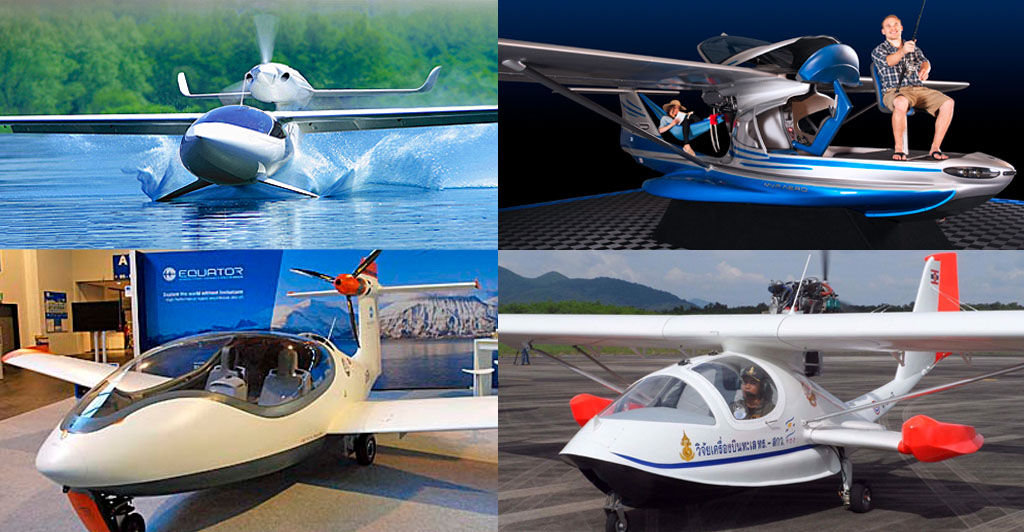
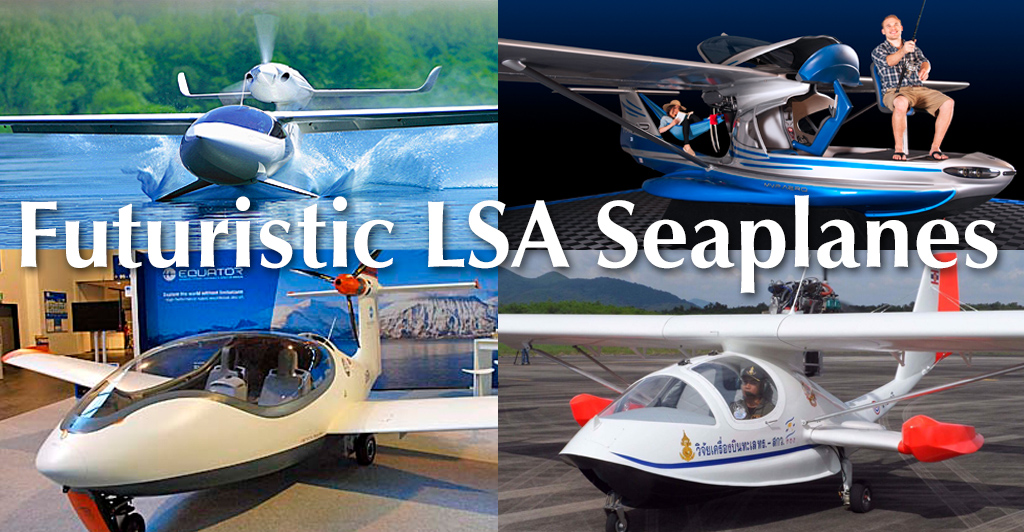
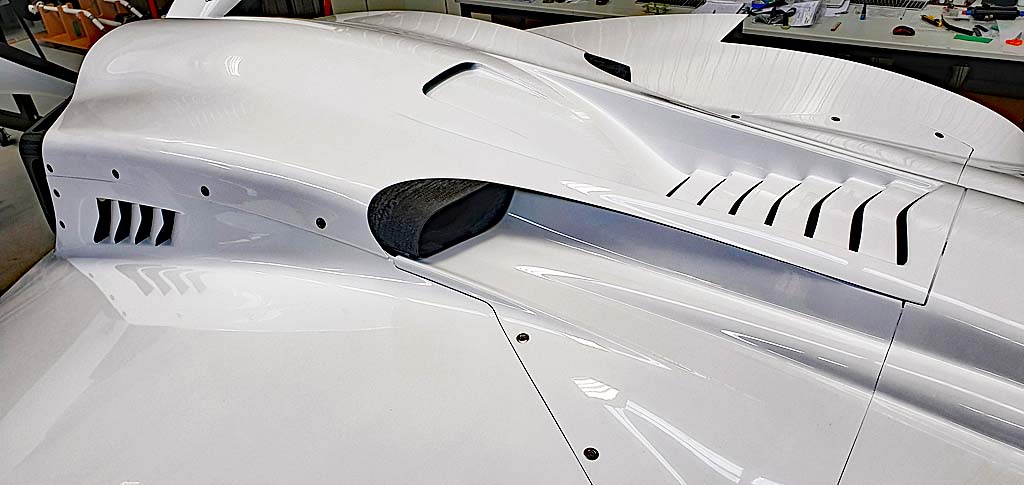 Look out, Icon A5! Here comes Wave and it should be quite exciting.
Designer Paul Vickers (see video interview below) has a history in boat-hull design. This history forms a logical path to a LSA seaplane with its boat hull and water control features. Paul employed that experience but has widened his history to encompass a flying boat, the Wave.
From the images that accompany this article, you may see a artist's sense of style, an engineer's focus on efficiency, and a creator's close attention to detail. I think these fresh photos convey those qualities quite well.
Look out, Icon A5! Here comes Wave and it should be quite exciting.
Designer Paul Vickers (see video interview below) has a history in boat-hull design. This history forms a logical path to a LSA seaplane with its boat hull and water control features. Paul employed that experience but has widened his history to encompass a flying boat, the Wave.
From the images that accompany this article, you may see a artist's sense of style, an engineer's focus on efficiency, and a creator's close attention to detail. I think these fresh photos convey those qualities quite well.
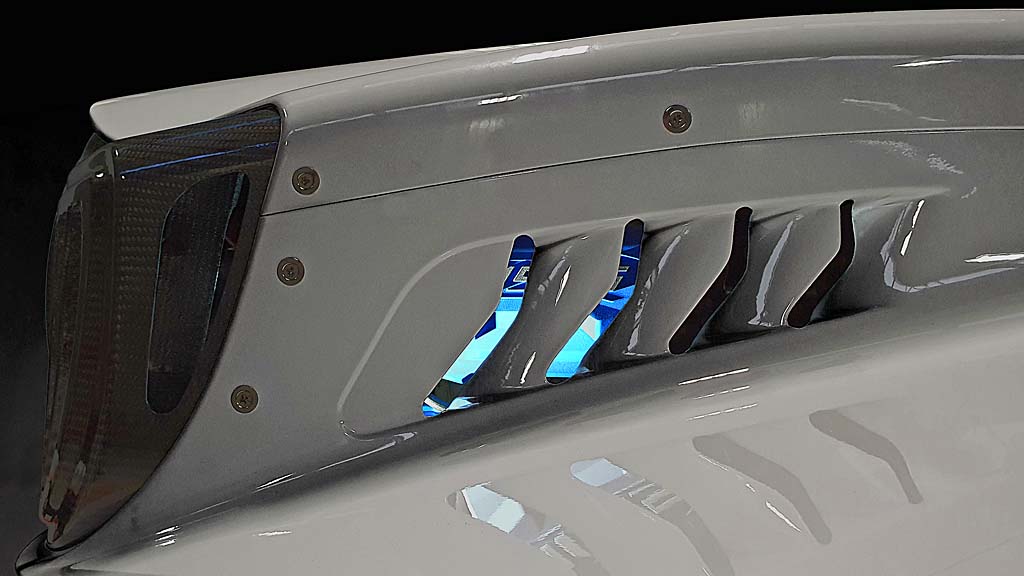 In one image you notice the Rotax 915iS hiding inside its shapely engine nacelle.
Over the years, Wave has evaluated different engines. At one time, they contemplated
In one image you notice the Rotax 915iS hiding inside its shapely engine nacelle.
Over the years, Wave has evaluated different engines. At one time, they contemplated 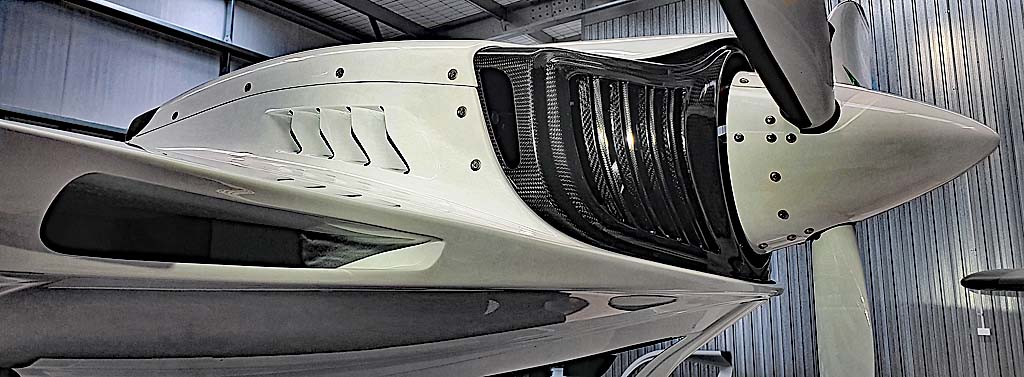 First flight is ahead — though this is one of those nailing-jello-to-a-wall stories. First flight is something a designer never wishes to rush. Yet after all the time spent working on this design, the desire to see Wave go aloft must be tremendous — not even considering what pressure those waiting for the design may be exerting.
Paul and his Vickers team have worked hard, not only to make a dashing design but creating one that is easier to build. Vickers reports their total part count is a fraction of Icon's for the A5, which should translate into quicker, easier, surer building and that in turn may help the New Zealand company keep their prices well below A5's. Wave is composed of around 400 parts where Vickers said 1,800 or more parts is more common. Each part adds a material and labor cost.
In another photo, you can see a door leaning up against the hangar wall. Reportedly, Wave will use an aft-sliding door to enter a rather spacious compartment.
First flight is ahead — though this is one of those nailing-jello-to-a-wall stories. First flight is something a designer never wishes to rush. Yet after all the time spent working on this design, the desire to see Wave go aloft must be tremendous — not even considering what pressure those waiting for the design may be exerting.
Paul and his Vickers team have worked hard, not only to make a dashing design but creating one that is easier to build. Vickers reports their total part count is a fraction of Icon's for the A5, which should translate into quicker, easier, surer building and that in turn may help the New Zealand company keep their prices well below A5's. Wave is composed of around 400 parts where Vickers said 1,800 or more parts is more common. Each part adds a material and labor cost.
In another photo, you can see a door leaning up against the hangar wall. Reportedly, Wave will use an aft-sliding door to enter a rather spacious compartment.
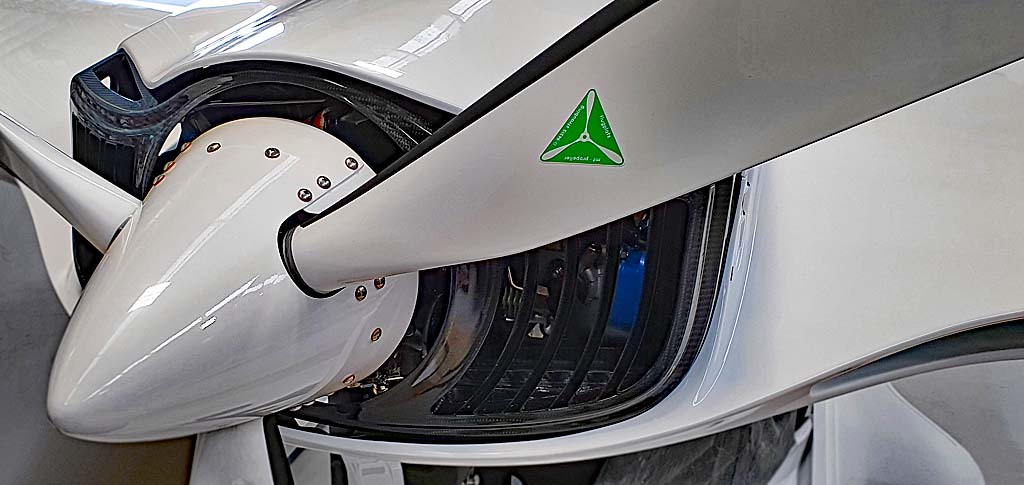 Wave also planned to use a novel arrangement of main gear — called "CrossOver" gear — such that it could handle the expected duties without needing to be retracted. Until the company gets first flight in their logbook, they're concentrating on the essentials so it's too early for confirmation of specific features.
Despite the uncertainties, Paul Vickers planned the design so meticulously that the first flight aircraft looks highly finished and not the sort of roughed-out prototype that often flies as a "proof-of-concept." If Paul achieves what I think he might with this impressive aircraft, the POC first-flight example might end up being very similar to the production aircraft that will follow.
Wave also planned to use a novel arrangement of main gear — called "CrossOver" gear — such that it could handle the expected duties without needing to be retracted. Until the company gets first flight in their logbook, they're concentrating on the essentials so it's too early for confirmation of specific features.
Despite the uncertainties, Paul Vickers planned the design so meticulously that the first flight aircraft looks highly finished and not the sort of roughed-out prototype that often flies as a "proof-of-concept." If Paul achieves what I think he might with this impressive aircraft, the POC first-flight example might end up being very similar to the production aircraft that will follow.
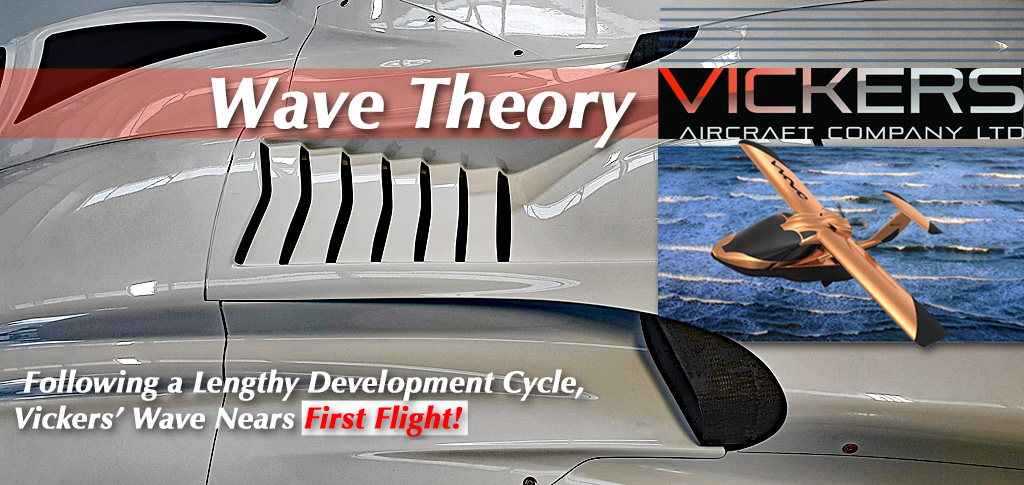
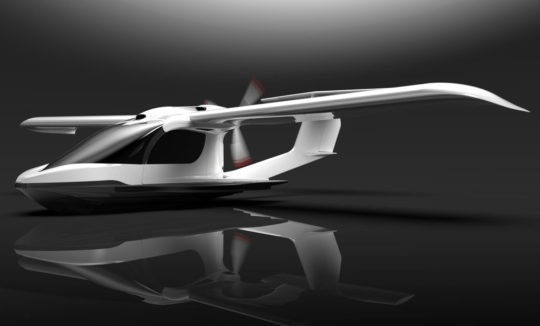 The Coronavirus madness is far from being a U.S. problem. Naturally, we tend to focus on our own part of the world …as we must. Yet even far-away countries are also struggling — to protect citizens and to keep their economies afloat. It simply has to improve as the present situation cannot last.
Despite the challenging situation, progress continues in the distant nation of New Zealand. As in many nations, wide-ranging business support has also been rolled out, softening the impact of the lockdown and allowing New Zealand to move forward with minimal long-term disruption.
The Coronavirus madness is far from being a U.S. problem. Naturally, we tend to focus on our own part of the world …as we must. Yet even far-away countries are also struggling — to protect citizens and to keep their economies afloat. It simply has to improve as the present situation cannot last.
Despite the challenging situation, progress continues in the distant nation of New Zealand. As in many nations, wide-ranging business support has also been rolled out, softening the impact of the lockdown and allowing New Zealand to move forward with minimal long-term disruption.
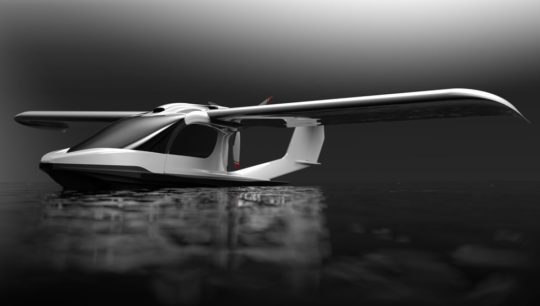 "Along with much of the world," Paul continued in early April, "New Zealand is feeling the effects of the Covid-19 pandemic with a state of emergency declared. With this four-week lockdown all non-essential companies are required to close or work from home."
However, he added, "This will also be the year we fly our much-anticipated Wave." Interest is indeed keen as proven by more than 120,000 views of the video shown at the bottom of this post.
Aircraft design and its accompanying release documents and part traceability often takes longer to create than the production of aircraft components and assemblies.
"Along with much of the world," Paul continued in early April, "New Zealand is feeling the effects of the Covid-19 pandemic with a state of emergency declared. With this four-week lockdown all non-essential companies are required to close or work from home."
However, he added, "This will also be the year we fly our much-anticipated Wave." Interest is indeed keen as proven by more than 120,000 views of the video shown at the bottom of this post.
Aircraft design and its accompanying release documents and part traceability often takes longer to create than the production of aircraft components and assemblies.
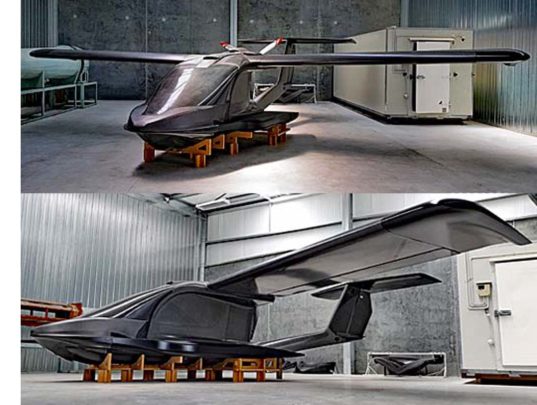 "While our technicians and workshop staff are safe at home with their families, our designers are using this time and working from their homes to finalise the remaining aspects of the design, prepare work and plan the actions required once we are able to get all staff safely back to work," observed Paul.
On a positive note, he reported the
"While our technicians and workshop staff are safe at home with their families, our designers are using this time and working from their homes to finalise the remaining aspects of the design, prepare work and plan the actions required once we are able to get all staff safely back to work," observed Paul.
On a positive note, he reported the 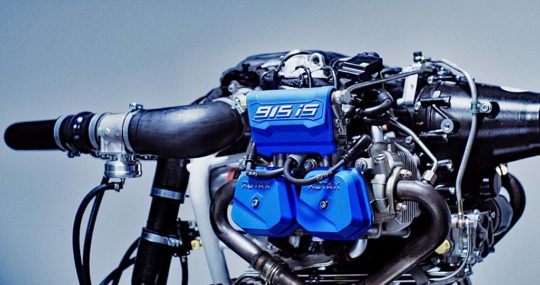 "Not currently being reliant on sales and having investors with long term vision makes Vickers a stable and strong company in this environment," explained Paul.
"This is our eleventh year working on Wave," noted Paul. "I am often asked why is it taking so long? The answer, you don’t want an aircraft to be rushed. It has to be right the first time, no shortcuts, no compromises and always safety first. Not once have I compromised on any of Vickers' core values, nor will I. Wave will be ready soon, but not before it is fully completed. It has taken the time that has been necessary to design and produce a truly incredible aircraft."
"Not currently being reliant on sales and having investors with long term vision makes Vickers a stable and strong company in this environment," explained Paul.
"This is our eleventh year working on Wave," noted Paul. "I am often asked why is it taking so long? The answer, you don’t want an aircraft to be rushed. It has to be right the first time, no shortcuts, no compromises and always safety first. Not once have I compromised on any of Vickers' core values, nor will I. Wave will be ready soon, but not before it is fully completed. It has taken the time that has been necessary to design and produce a truly incredible aircraft."
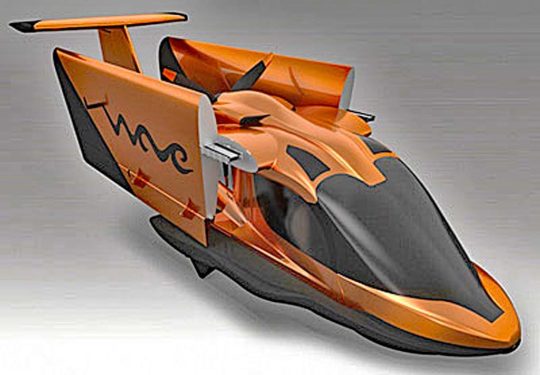 Earlier
Earlier 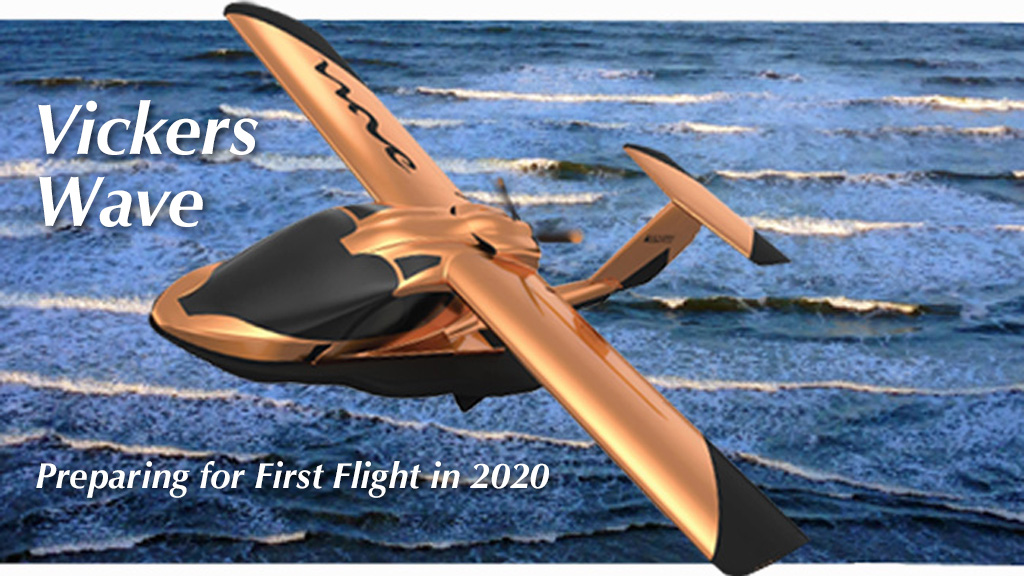
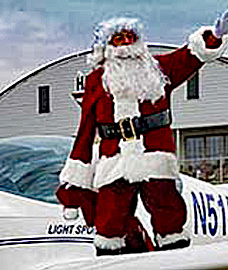 The last airshow (
The last airshow (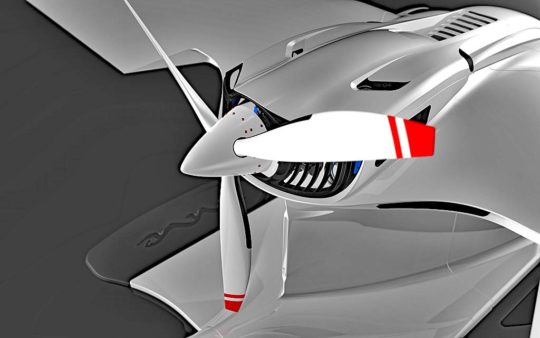 One of the most anticipated of these new Light-Sport Aircraft seaplanes is the
One of the most anticipated of these new Light-Sport Aircraft seaplanes is the 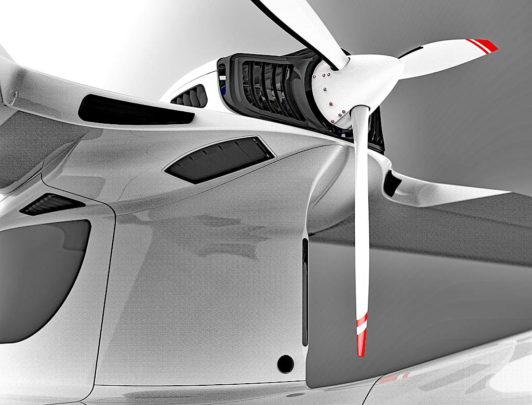 "As 2019 draws to a close, we are pleased to announce a new strategic partnership with
"As 2019 draws to a close, we are pleased to announce a new strategic partnership with 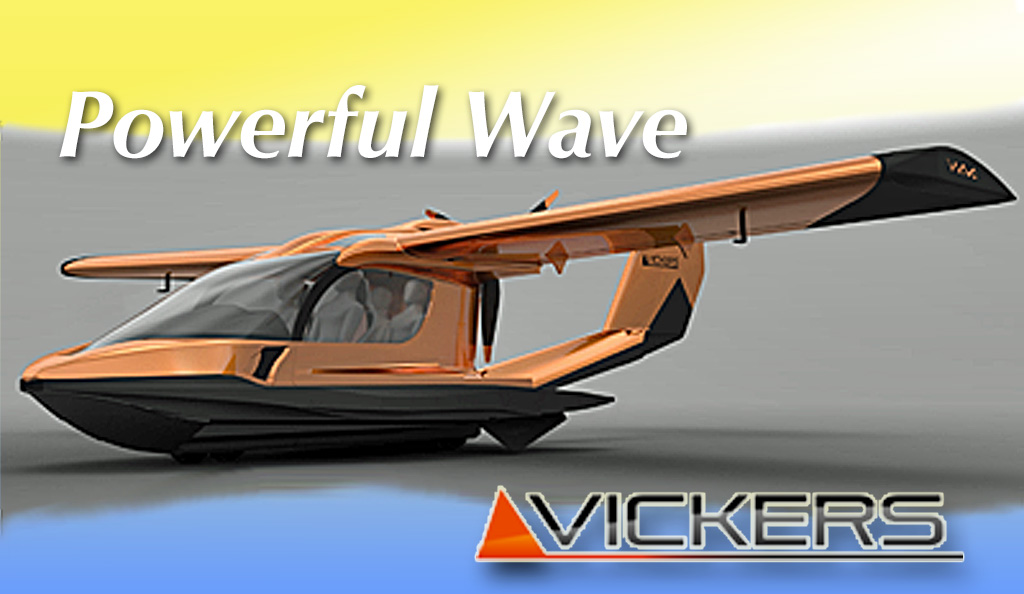
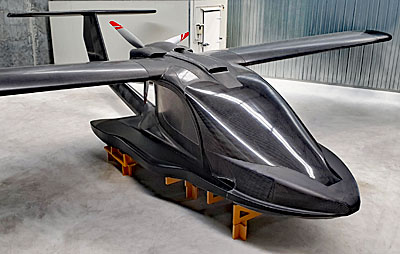 You might think those words don't apply to many Light-Sport Aircraft. Certainly, "big" is not a word most pilots associate with LSA. A number are actually rather compact, though with standardized rules, aircraft parameters don't differ as much as some might think.
Wave is different …at least in one particular way. The newest LSA seaplane in development in the Southern Hemisphere has something special. What is it?
Vickers recently announced winning a weight increase exemption for their deluxe Wave. As other producers wait to read FAA's coming regulation regarding aircraft size, Wave can begin leveraging their higher gross weight to increase capability and power.
Principal Paul Vickers stated, "After many months we can finally announce that Vickers Aircraft has received our FAA weight exemption for the Wave™ LSA. This will allow a MTOW of 1,850 pounds (839 kilograms), so we can incorporate additional safety features that will set the Wave apart and help us achieve our long-term goal of moving aviation forward." He added, "Some of these safety features include water maneuvering thruster, CrossOver Landing gear, increased horsepower, and the required fuel capacity to ensure the Wave is operated safely and can perform its mission."
Paul continued, "We have designed the Wave for this increased MTOW and have incorporated the required additional structure." He feels this sets up Wave to smoothly transition into the LSA rule changes that are on the horizon, new definitions that will include adjustments regarding the weight of Light-Sport Aircraft.
You might think those words don't apply to many Light-Sport Aircraft. Certainly, "big" is not a word most pilots associate with LSA. A number are actually rather compact, though with standardized rules, aircraft parameters don't differ as much as some might think.
Wave is different …at least in one particular way. The newest LSA seaplane in development in the Southern Hemisphere has something special. What is it?
Vickers recently announced winning a weight increase exemption for their deluxe Wave. As other producers wait to read FAA's coming regulation regarding aircraft size, Wave can begin leveraging their higher gross weight to increase capability and power.
Principal Paul Vickers stated, "After many months we can finally announce that Vickers Aircraft has received our FAA weight exemption for the Wave™ LSA. This will allow a MTOW of 1,850 pounds (839 kilograms), so we can incorporate additional safety features that will set the Wave apart and help us achieve our long-term goal of moving aviation forward." He added, "Some of these safety features include water maneuvering thruster, CrossOver Landing gear, increased horsepower, and the required fuel capacity to ensure the Wave is operated safely and can perform its mission."
Paul continued, "We have designed the Wave for this increased MTOW and have incorporated the required additional structure." He feels this sets up Wave to smoothly transition into the LSA rule changes that are on the horizon, new definitions that will include adjustments regarding the weight of Light-Sport Aircraft.
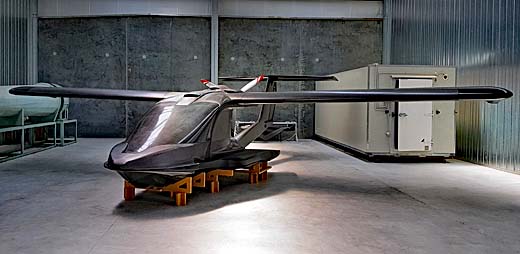 "The aviation industry is known for its high barriers to entry," said Paul. "While everyone sees the final product (the aircraft) flying, what they don’t see are the years of work that go into the company structure behind it." Vickers related tasks to meet business regulations plus health and safety requirements, environmental considerations, design, flight and manufacturing criteria as well as aviation authority regulations prior to the first aircraft even operating.
"With this in mind, the last 12 months has seen Vickers not only progress the aircraft design but also move into an employment phase to bring in the necessary people to meet all of our regulatory requirements," Paul explained. He said this means a doubling of the Engineering (Design) Team numbers and the employment of a Quality and Systems Manager.
Increased staffing levels allowed engineering to move into the stress testing phase of the design program to prove the strength of the design. This phase includes physical coupon testing to demonstrate Vickers can manufacture the parts to the design strengths and to verify our structural analysis. "This phase has to be completed before the flight test aircraft is manufactured to ensure it operates as expected," Paul noted.
"The aviation industry is known for its high barriers to entry," said Paul. "While everyone sees the final product (the aircraft) flying, what they don’t see are the years of work that go into the company structure behind it." Vickers related tasks to meet business regulations plus health and safety requirements, environmental considerations, design, flight and manufacturing criteria as well as aviation authority regulations prior to the first aircraft even operating.
"With this in mind, the last 12 months has seen Vickers not only progress the aircraft design but also move into an employment phase to bring in the necessary people to meet all of our regulatory requirements," Paul explained. He said this means a doubling of the Engineering (Design) Team numbers and the employment of a Quality and Systems Manager.
Increased staffing levels allowed engineering to move into the stress testing phase of the design program to prove the strength of the design. This phase includes physical coupon testing to demonstrate Vickers can manufacture the parts to the design strengths and to verify our structural analysis. "This phase has to be completed before the flight test aircraft is manufactured to ensure it operates as expected," Paul noted.
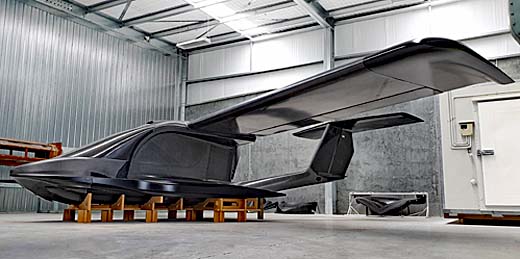 During this time, finishing touches put into the manuals and processes ensure that Vickers meets all of its regulatory requirements. "We are using technology to do it smarter and quicker," said Paul. "Vickers is creating a paperless work environment from engineering to the manufacturing facility to customer support. Ensuring that all data is generated and stored electronically cuts down on development time and physical storage space while providing improved levels of control of the build of individual parts and aircraft." Vickers notes use of portable electronic devices such as phones and tablets to allow staff to directly monitor the manufacturing equipment such as ovens and freezers. This technology also enables the approval of work and the ordering of parts and materials electronically.
"The benefits to the customer are that our team can quickly retrieve this data both onsite and offsite, immediately understanding the configuration of any aircraft we have built" said Paul. "This provides accurate and fast response times to customers anywhere in the world. There will be no more needing to wait until the office opens in the morning." That will be valuable as New Zealand operates on a very different time than, for example, the USA.
During this time, finishing touches put into the manuals and processes ensure that Vickers meets all of its regulatory requirements. "We are using technology to do it smarter and quicker," said Paul. "Vickers is creating a paperless work environment from engineering to the manufacturing facility to customer support. Ensuring that all data is generated and stored electronically cuts down on development time and physical storage space while providing improved levels of control of the build of individual parts and aircraft." Vickers notes use of portable electronic devices such as phones and tablets to allow staff to directly monitor the manufacturing equipment such as ovens and freezers. This technology also enables the approval of work and the ordering of parts and materials electronically.
"The benefits to the customer are that our team can quickly retrieve this data both onsite and offsite, immediately understanding the configuration of any aircraft we have built" said Paul. "This provides accurate and fast response times to customers anywhere in the world. There will be no more needing to wait until the office opens in the morning." That will be valuable as New Zealand operates on a very different time than, for example, the USA.
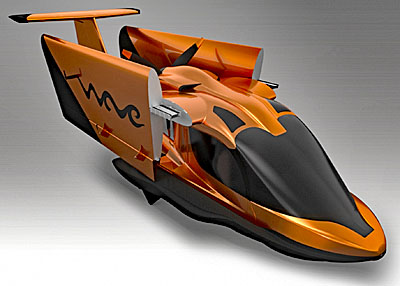
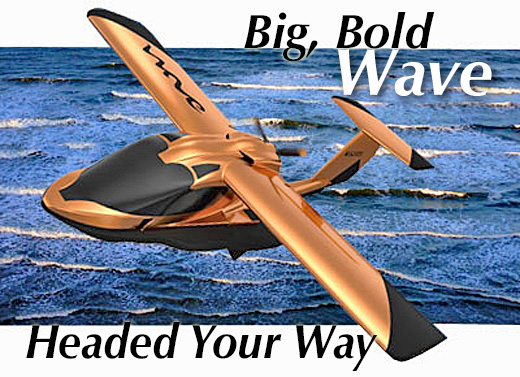
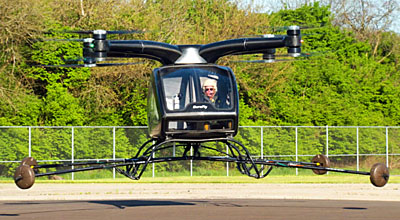
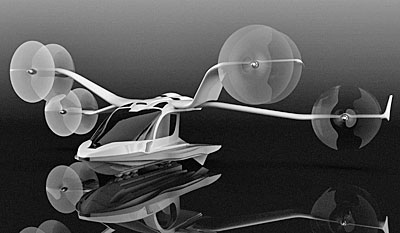
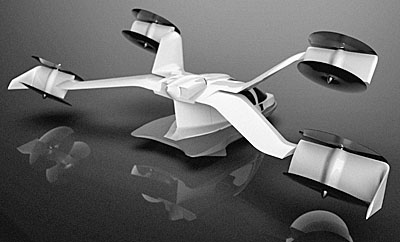
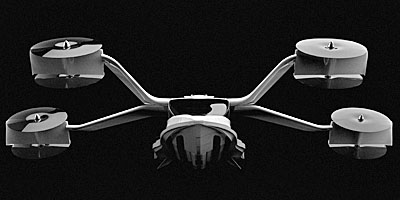 "Wave eVTOL is a four-seat, semi-autonomous hybrid and will harvest 80% of our Wave Light Sport Aircraft model’s DNA," said Paul. "This positions us well down the road of developing shared technology, components and tooling, R&D, materials, manufacturing processes, techniques, and facilities that we have been refining over the years for our LSA."
"Developing an eVTOL with amphibious capabilities opens possibilities not yet explored in this space, and with the New Zealand government leading the world from a regulation standpoint, New Zealand is on track to be the first country to allow approved manned eVTOL passenger flights."
Vickers Aircraft is working closely with the Civil Aviation Authority of New Zealand (CAANZ) throughout the development of the Wave LSA and eVTOL aircraft variants.
As you can see yourself, the proposed Wave eVTOL uses the multicopter approach with wing sections. They aren't the first to do this (
"Wave eVTOL is a four-seat, semi-autonomous hybrid and will harvest 80% of our Wave Light Sport Aircraft model’s DNA," said Paul. "This positions us well down the road of developing shared technology, components and tooling, R&D, materials, manufacturing processes, techniques, and facilities that we have been refining over the years for our LSA."
"Developing an eVTOL with amphibious capabilities opens possibilities not yet explored in this space, and with the New Zealand government leading the world from a regulation standpoint, New Zealand is on track to be the first country to allow approved manned eVTOL passenger flights."
Vickers Aircraft is working closely with the Civil Aviation Authority of New Zealand (CAANZ) throughout the development of the Wave LSA and eVTOL aircraft variants.
As you can see yourself, the proposed Wave eVTOL uses the multicopter approach with wing sections. They aren't the first to do this (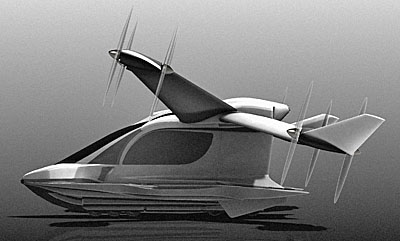 Anticipating a question readers might pose, I asked Paul if this new direction meant he was easing away from the fixed wing LSA.
"The initial design for the Wave was always to have a core base that can be used on a number of different models; the second in this range is the Wave eVTOL," Paul explained. "With facilities and technical ability already established [and with] wider government and regulatory support for the development of next generation aircraft in New Zealand, we feel confident in having a proof of concept ready by 2020."
The Wave LSA seaplane will come much sooner though Vickers Aircraft is cautious about promises given what they've observed from other companies in this space. He offered no update on the fixed wing model.
However, he is enthusiastic about using years of hard work to bring a one-design company closer to the family of aircraft he always foresaw.
Anticipating a question readers might pose, I asked Paul if this new direction meant he was easing away from the fixed wing LSA.
"The initial design for the Wave was always to have a core base that can be used on a number of different models; the second in this range is the Wave eVTOL," Paul explained. "With facilities and technical ability already established [and with] wider government and regulatory support for the development of next generation aircraft in New Zealand, we feel confident in having a proof of concept ready by 2020."
The Wave LSA seaplane will come much sooner though Vickers Aircraft is cautious about promises given what they've observed from other companies in this space. He offered no update on the fixed wing model.
However, he is enthusiastic about using years of hard work to bring a one-design company closer to the family of aircraft he always foresaw.
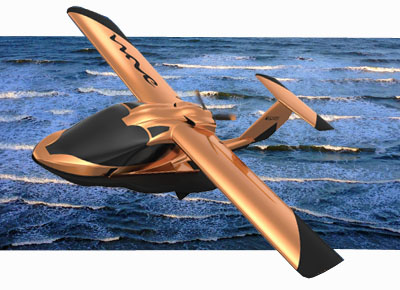 "The beauty of the Wave eVTOL is that it can be developed in parallel with [our] LSA, enabling us to maintain our schedule," said Paul. "Both models will share everything from components and tooling to ergonomics and storage, as well as manufacturing procedures and material allowables that will combine to result in a rapid development cycle."
To further communication on the new aircraft in planning, an organization called
"The beauty of the Wave eVTOL is that it can be developed in parallel with [our] LSA, enabling us to maintain our schedule," said Paul. "Both models will share everything from components and tooling to ergonomics and storage, as well as manufacturing procedures and material allowables that will combine to result in a rapid development cycle."
To further communication on the new aircraft in planning, an organization called 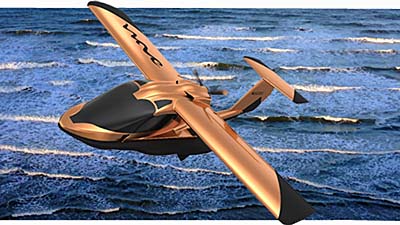
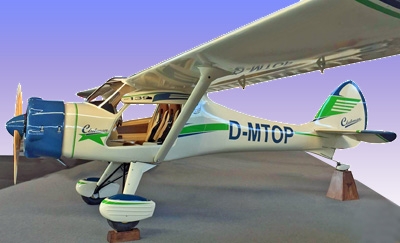
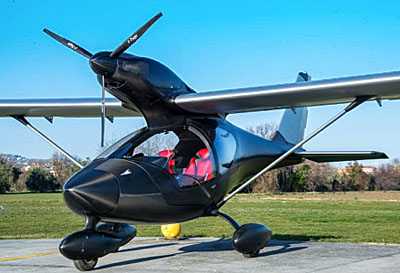
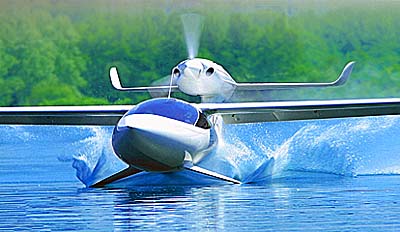
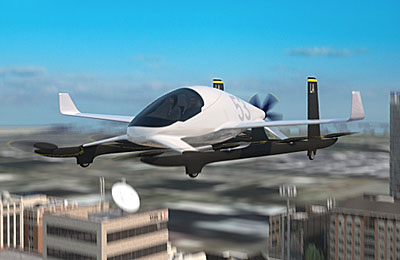 By the way, the use of technology seeks not only to save weight. New methods are used because they can, that is, developers don't need to jump through the regulatory hoops as demanded in Part 23. LSA developers can quickly implement new ideas and materials.
Boeing’s Aurora is one of a flock of new developments aimed at the air taxi trade but it could result in a sport model.
By the way, the use of technology seeks not only to save weight. New methods are used because they can, that is, developers don't need to jump through the regulatory hoops as demanded in Part 23. LSA developers can quickly implement new ideas and materials.
Boeing’s Aurora is one of a flock of new developments aimed at the air taxi trade but it could result in a sport model.
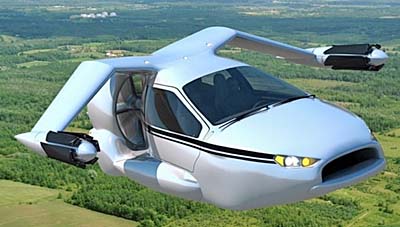
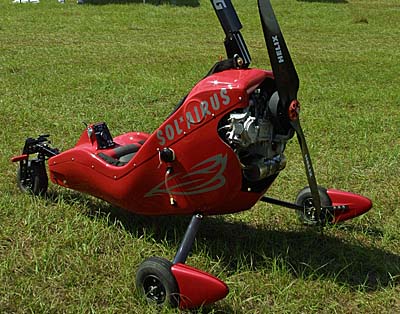
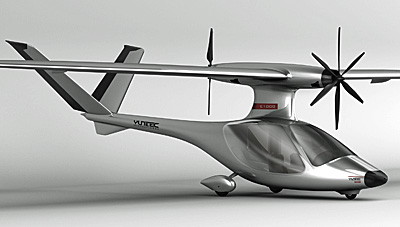
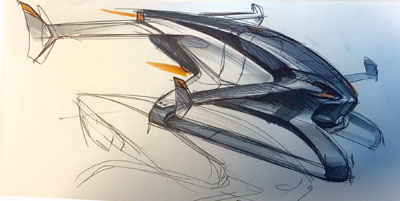
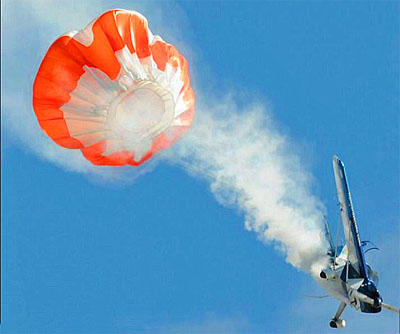
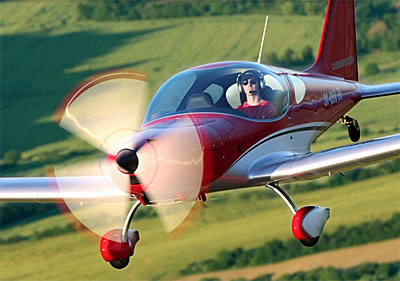
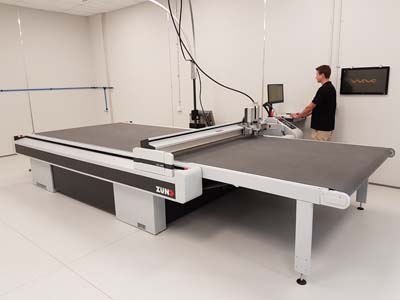
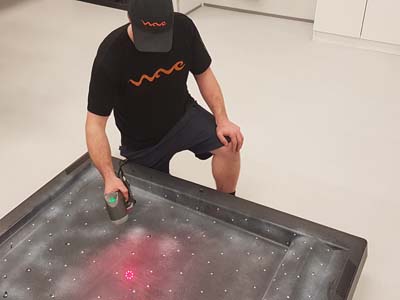
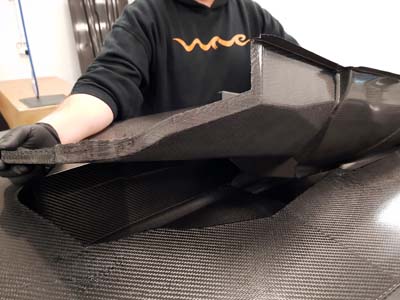
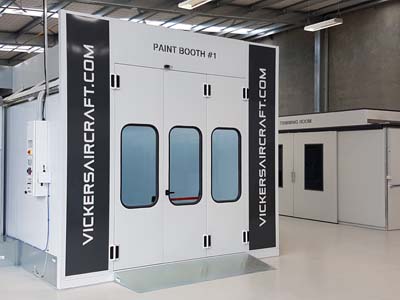
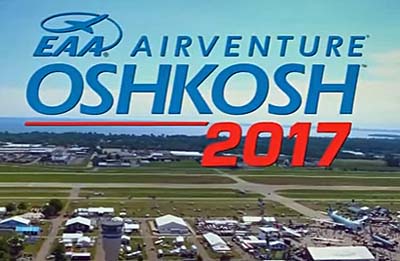 "We received confirmation from EAA on the time slot for our forum and meet & greet at
"We received confirmation from EAA on the time slot for our forum and meet & greet at 